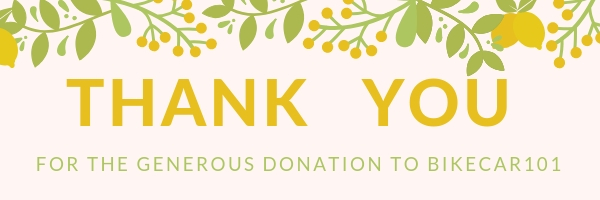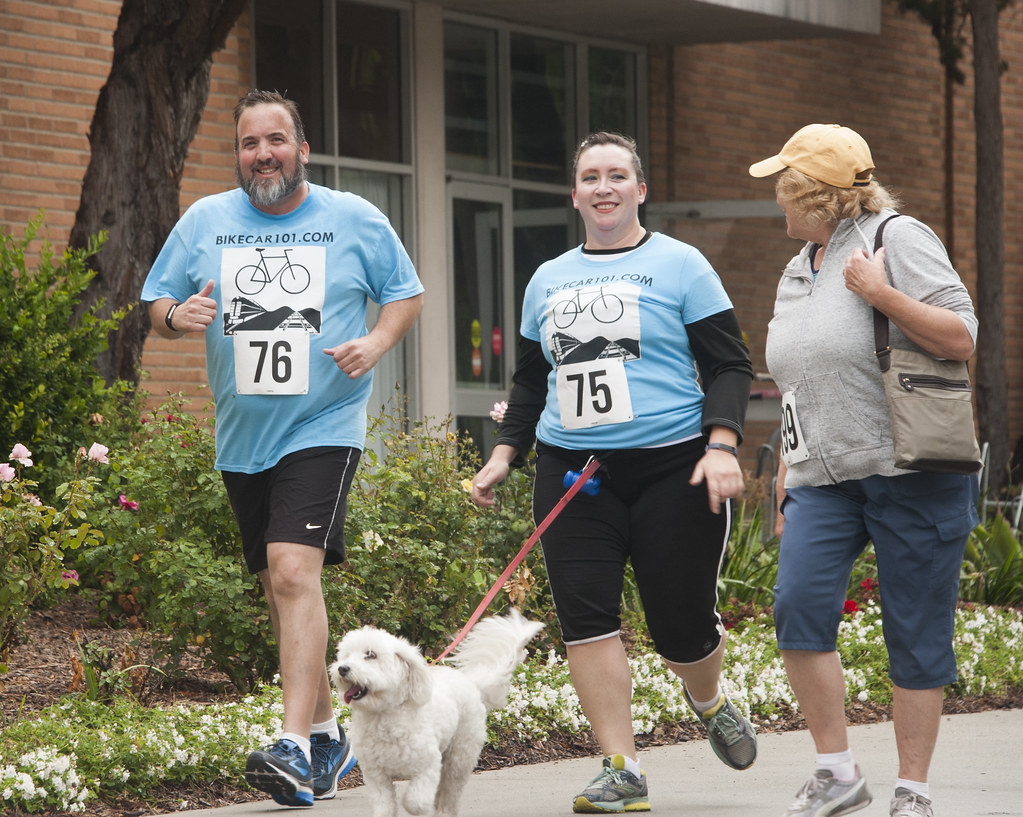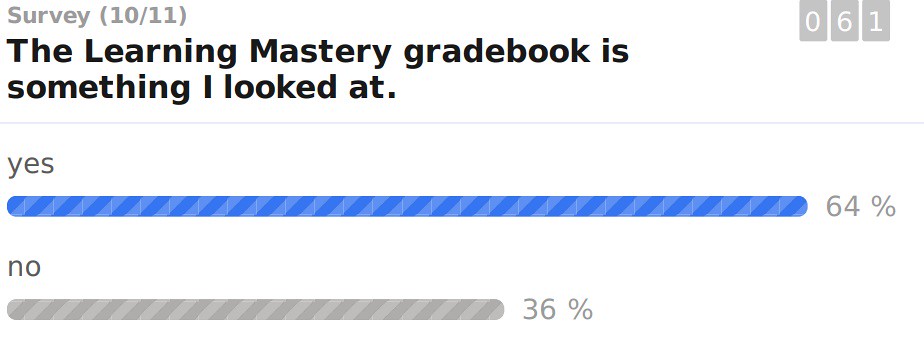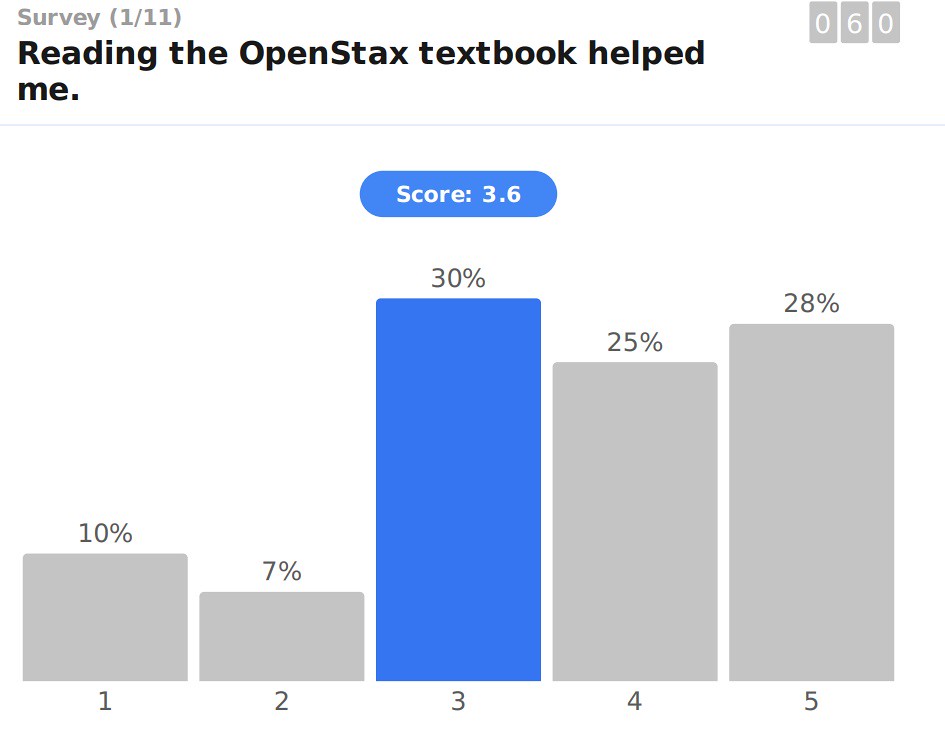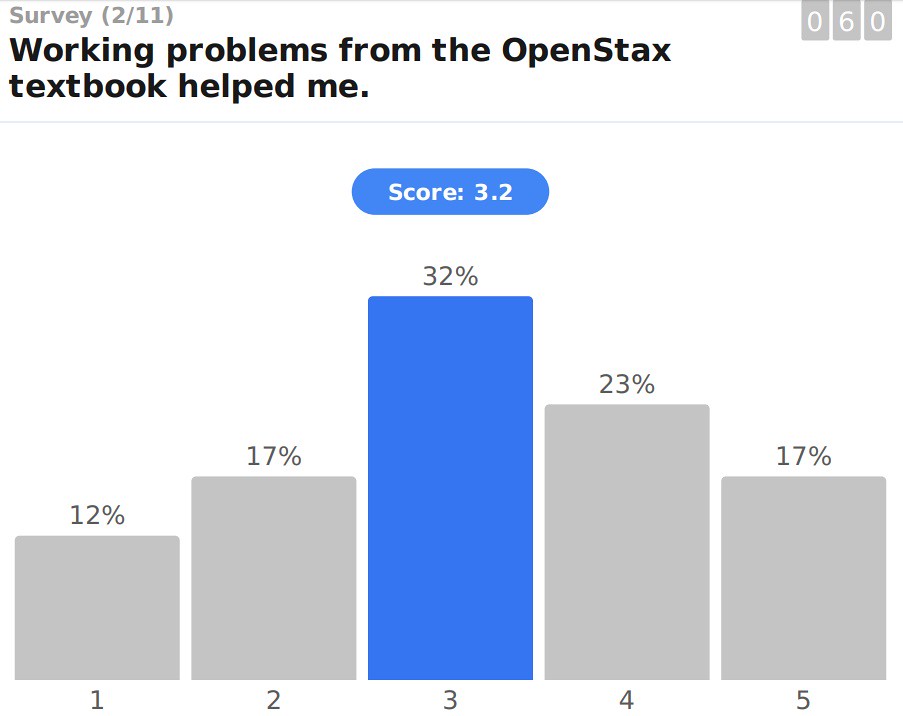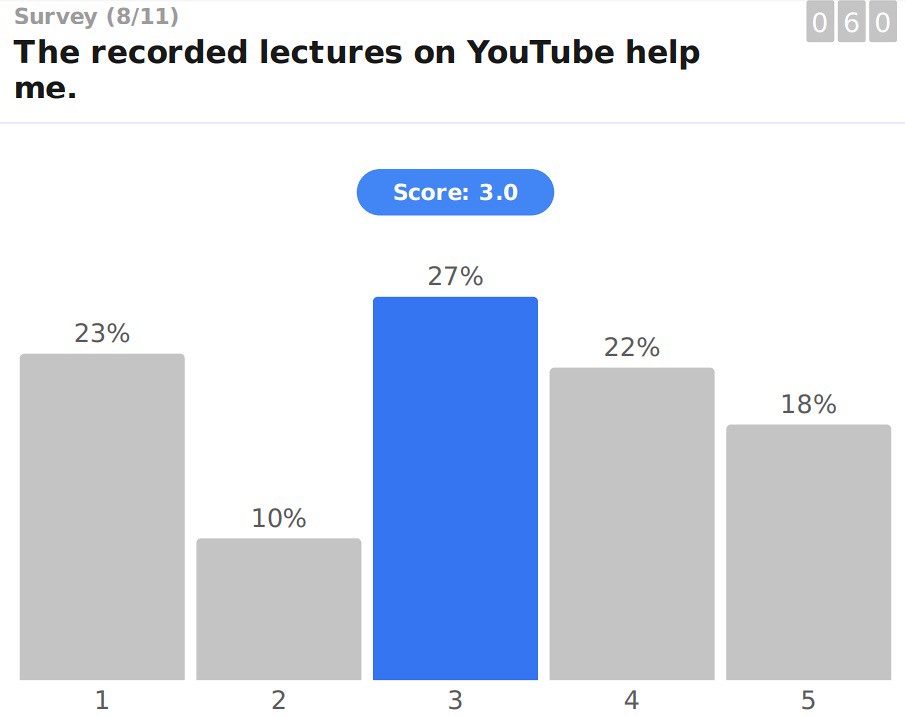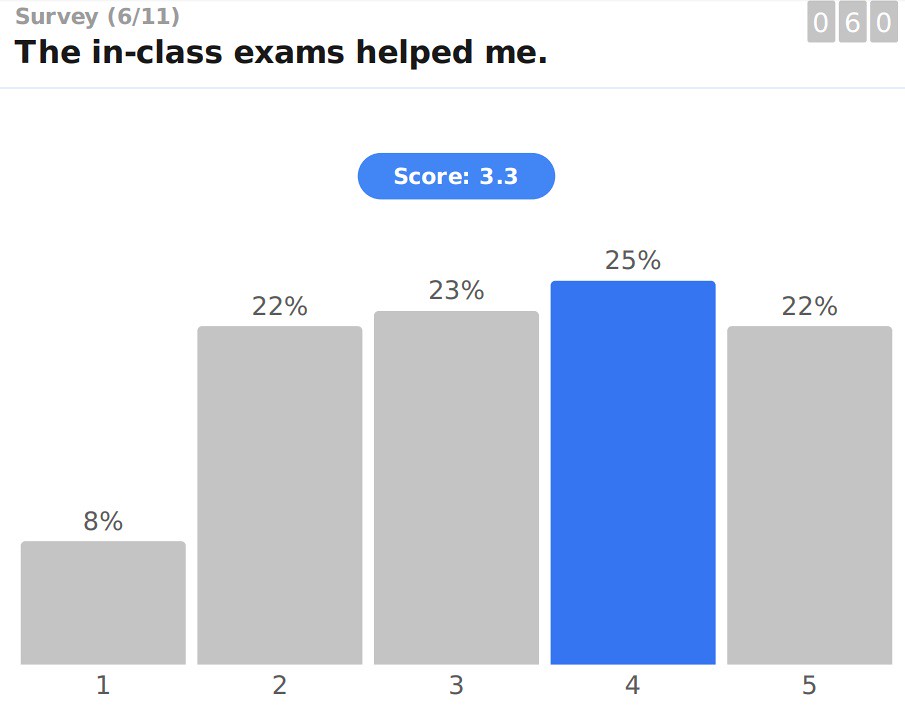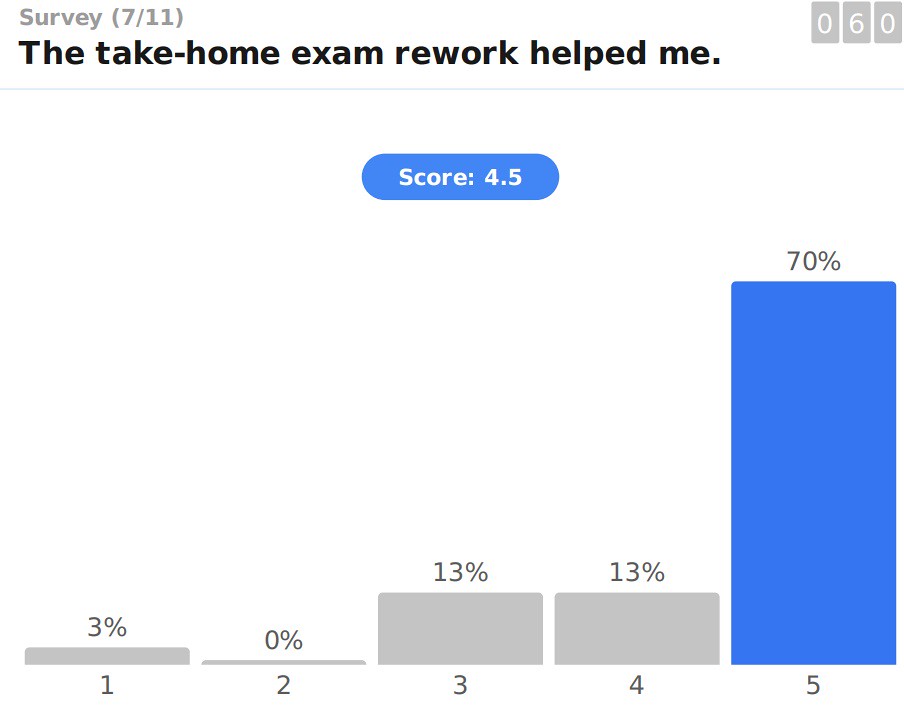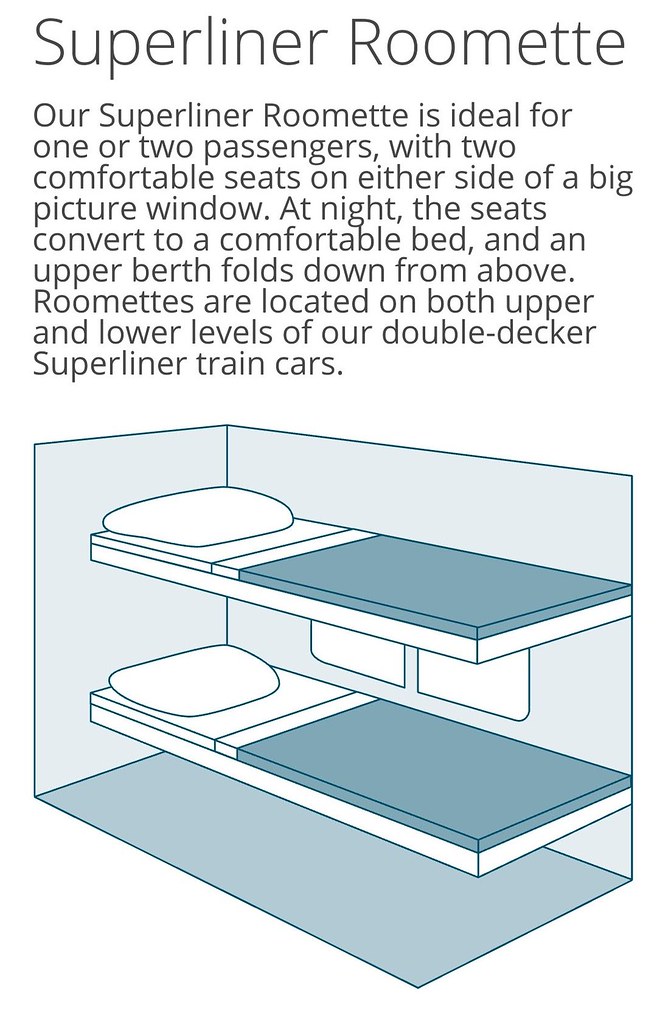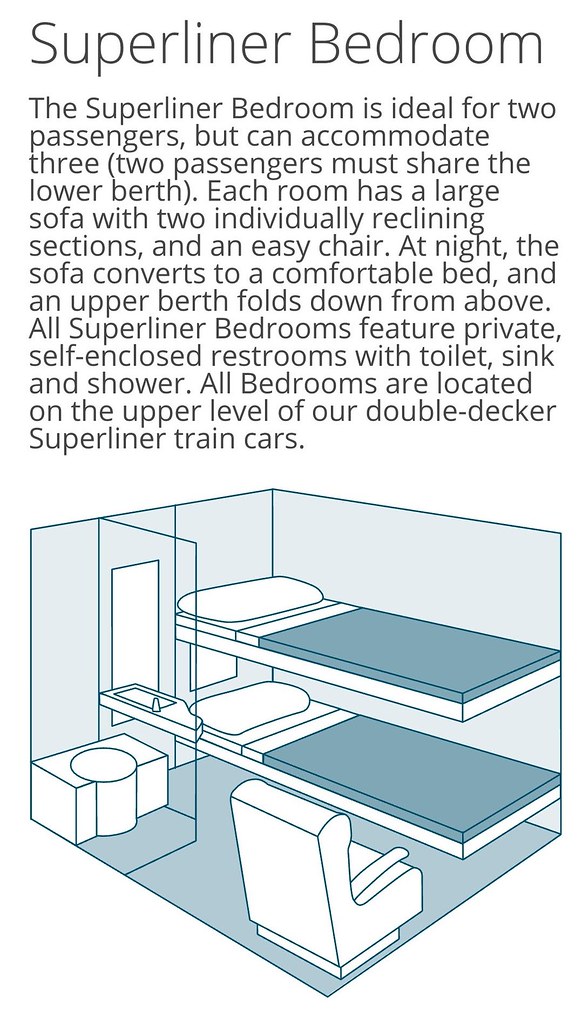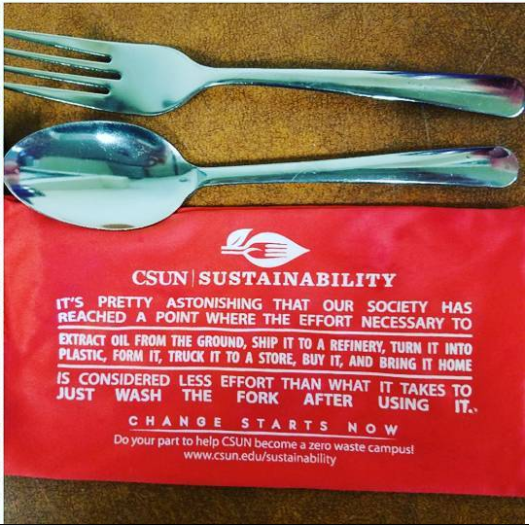This semester is nearly over. We have just a few precious hours for missing, late and just completed work to be uploaded to our learning management system (LMS) Canvas. It has been a difficult week to say the least.
We were under threat for a mass shooting, and the reaction of our students was such that they called off just one day of finals week. Sometimes a word pops into my head to describe how I'm feeling and then I look up the definition of that word and it is actually perfect.
Our reaction as a campus community to racist graffiti and a subsequent handwritten note has been flaky. I know people are still feeling uncertain about their safety. It has been a challenge to reassure our students and ourselves that the campus can protect us.
I feel my patience is thin and breaking into small pieces. But on the bright side, our department pot-luck is in just 30 minutes. I made mini-quiches that have a flaky crust. I made cupcakes for dear husband's birthday but messed up the icing recipe by adding all the ingredients at once.
Luckily, I was able to salvage the messed up frosting and make a gingerbread bundt cake. But I flaked out on that and forgot to add the molasses, so I hope it tastes OK. I restarted a second batch of icing and that one came out well, but I forgot to bring it today.
I bought all the ingredients for the salad but forgot to pressure-cook the pinto beans. Luckily, I made lentils and rice yesterday so I just used that instead. I also forgot to bring the onion and cheese that I bought over here to school. I just had so much on my mind!
I used to get disappointed about these things and dwell on negatives, but I have been practicing letting go of perfection and focusing instead of making the best of things and adapting and NOT stressing over what could have been but instead celebrating and elevating what IS.
I am so grateful that I made it a point to include redundancy and multiple feedback loops into my course this semester. It made it much less stressful to adapt to shifting circumstances. I am also grateful for technology, having many assignments in the cloud was a godsend.
If there is anyone out there that can suggest a winter training course (bootcamp) for Google Classroom, I would be interested. I appreciate my colleagues that helped support me during this time. The strategies that helped me diffuse negative energy: yoga, coloring mandalas, metta meditation.
On a very bright note, my students delivered their Pecha Kucha presentations in a way that was completely unexpected and a joy to watch. Giving the students the classroom space and technology, while assisting them by putting their content into a timed format, was just the right balance.
It's hard to set goals for next year since I don't have any idea what I'll be teaching. But I know I did some things very well this semester and I am extremely proud of the progress that I made. I know I don't want to travel or be wild over break, I just want to stay home and get centered.
Friday, December 14, 2018
Feeling Flaky
Labels:
art,
beauty,
career,
community,
education,
equity,
goals,
gratitude,
learning,
meditation,
motivation,
positive,
simplicity,
teaching,
teamwork,
technology,
upcycling,
winning,
winter,
yoga
Friday, November 30, 2018
Beat the Blues week 2018
This week at CSUN is all about mental health awareness, anxiety and depression. Our students reported factors affecting their academic performance include:
2018 has been a great year. I have so much to be thankful for. I was just tracking what we've accomplished with our nonprofit, Bikecar101 this year. It's interesting how we incorporated in 2014 and we are still pushing the active transportation conversation in Los Angeles.
I have found some time for rollerskating at Skateland and Moonlight Rollerway. What the skating does for my body is lets me release all the tension in my neck and shoulders. I love the music and the good vibes that I get from the other skaters. I'm not a great skater, but I enjoy it.
Right now, I'm writing about mental health because it's been a month of ups and downs. At the beginning of November I was so overwhelmed that I made a TO DO list with 26 action items. Then I obsessed for a while about how I could ever possibly get all those things done.
Reviewing that list gives me some sense of peace because even though I added more tasks, totaling 35 action items, I've crossed off all but 9 of them. The reason I made the list is that I was just doing one task after another and NOT doing the most urgent items first.
With all the tasks listed in no particular order, it allowed me to prioritize and start getting stuff done. So in conclusion, that's how I Beat the Blues. Being as this is my Thanksgiving blog, I am grateful for all the people (and pets) in my life that support me physically, professionally and psychologically.
- Stress
- Anxiety
- Sleep difficulties
- Work
- Depression
One of the cool events we heard (the barking) was a bunch of therapy dogs on campus. I feel so grateful that I have a personal therapy dog waiting at home for me at the end of every day.
A couple of healthy strategies for me that have been working are:
- gratitude
- asking for help
I love my Faculty Development colleagues. I have grown so much as a teacher in the past several years. This blog has allowed me to look back at my thoughts and feelings about a teaching philosophy and finding my place in academia as a part-time lecturer, and I've come a long way.
We've spent some time in the gym, working on our fitness. I used MyFitnessPal to track the foods I was eating to find some balance in the nutrition department. I certainly am not an avid runner as I once was, but through our Commit To Be Fit (CTBF) family, we are starting to run again.Commit to be fit family #CSUN60 pic.twitter.com/R9JcJFS2vk— Dr. Kayla A. Kaiser (@hamerk02) October 13, 2018
I have found some time for rollerskating at Skateland and Moonlight Rollerway. What the skating does for my body is lets me release all the tension in my neck and shoulders. I love the music and the good vibes that I get from the other skaters. I'm not a great skater, but I enjoy it.
Right now, I'm writing about mental health because it's been a month of ups and downs. At the beginning of November I was so overwhelmed that I made a TO DO list with 26 action items. Then I obsessed for a while about how I could ever possibly get all those things done.
Reviewing that list gives me some sense of peace because even though I added more tasks, totaling 35 action items, I've crossed off all but 9 of them. The reason I made the list is that I was just doing one task after another and NOT doing the most urgent items first.
With all the tasks listed in no particular order, it allowed me to prioritize and start getting stuff done. So in conclusion, that's how I Beat the Blues. Being as this is my Thanksgiving blog, I am grateful for all the people (and pets) in my life that support me physically, professionally and psychologically.
Labels:
community,
diversity,
education,
family,
gratitude,
learning,
love,
meditation,
motivation,
Northridge,
nutrition,
positive,
rollerskating,
running,
simplicity,
teaching,
teamwork,
transportation,
writing,
yoga
Saturday, October 20, 2018
Mid semester Report
Changes are afoot here. The season feels like fall with a Santa Ana wind. The low relative humidity has the air very crisp, and the winds have revealed the mountains that are usually hiding in plain sight behind a curtain of smog. And I've overhauled CHEM 101.
I've been trying out a new paradigm in my CHEM 101 class. During "lecture" we are doing POGIL-type activities and we are doing them in groups. Students take photos of their Contribution Form and upload it to Canvas. I've used the Objectives feature of Canvas to create rubrics and track alignment of assignments to topics covered on the exams. Grading by Objective and turning on a feature called the Learning Mastery gradebook gives students a way to guide their studying on things they need to work on while leaving those topics they've already mastered alone.
I've flipped the classroom to lecture only briefly (20 minutes every other period) during "Lecture" and even more briefly (20 minutes every period) during "Discussion." I thought students may feel more comfortable asking questions in "Discussion" because it's a smaller class size and a more intimate classroom setting (as square footage goes).
The rooms are so full, there's no way to collect/pass back papers so students turn in everything electronically, with the exception of the exams. I can give feedback electronically. For group work, the comment (typed once) is sent to all members of the group (3-4 students). For individual assignments, I can identify misconceptions and send corrections and suggestions to students one-by-one.
The groups have been assembled to mix over- and under-prepared students, I used an alphabetical system based on plants/names/colors. I got the idea staring at a box of crayola crayons. I made this random group picker wheel to call on groups, but I haven't used it yet.
I've been using Sli.do to capture anonymous feedback. The types of questions I ask this way are regarding Did you read? What are your fears? Suggestions for the course. Anything I think students wouldn't want to admit to. They can also ask questions of me and I can answer it online.
On a recent survey regarding Exam 3, 63% of respondents said that if they had more time, they'd come to office hours. In addition, 50% of respondents said that if they had more time, they'd meet with their group to study AND make chapter outlines for the chapters covered by the exam.
I've been using PollEv to capture non-anonymous content knowledge. The activity is NOT worth points but it gives me an idea of what they are already understanding and what I need to plan to teach them that week and the next week.
I chose to use an OER, called OpenStax. It's something a colleague suggested to me a few years ago but I didn't feel secure enough in my job to do something like that unilaterally. Now, I feel more empowered to do what is best for students regardless of how my colleagues may react. So far, I like the change. The quality of the book is equivalent. There's no free online homework, but as part of the "flipped" model, I'm having students do problems DURING class instead of at home. The book (online or offline in .pdf) is FREE for the students.
Creative Exercises started out as an in-class exercise but have become a take-home assignment. Students are practicing showing their work, making their thoughts easy to see, writing down everything they know about a writing prompt. This goes together with one of my goals for the students which is teaching them about "Writing to Learn." In the process of writing down your thoughts, you can teach yourself things, which is why I strive to maintain this blog. Maybe in the future, I will have them upload their Chapter Outlines.
There's a YouTube playlist where students can go and watch the lectures that I would have done during class. I learned how to put hyperlinks in the video description so that students don't have to watch the entire video, they can skip ahead to topics that they want to know more about. I'm not sure how this is going, most of the feedback says that the videos aren't helpful.
The exam involves re-working. The in-class exam time is for students to show what they know in that moment without any help and with only a small set of reference information. Then they have a few weeks to revise their work and resubmit. This revision is submitted online. I'm giving 6 exams instead of 3 exams and 3 quizzes. The last two exams are comprehensive, with the idea that the first one will prepare them to do better on the second one.
Everything is available online to print and turn in. The due dates aren't rigid. The groupwork allows for flexibility if a person misses one class here and there. I've had a much easier time accommodating students who miss class for a religious holiday or doctor's appointment. Students perceive me as being more understanding, but in truth I just have a more flexible approach to assignments.
I also don't feel pressured to grade all 75 at once. I can sit down and grade for 10 minutes, then walk away. This takes the pressure off of me to do "marathon grading." Clicking the rubric is pretty effortless and then I can type comments faster than I would have been able to write them. I feel like having a rubric removes some of the bias. Also, since students upload their work, they aren't writing their name on it. I could do anonymous grading in Canvas to further remove bias.
Clearly there were other topics I thought about writing about: transportation, chemistry, climate change, community, Metrolink, politics, weight loss and vitamins. There just isn't time now. But seriously, GO VOTE.
It's taken me a long time and a lot of soul searching to get to the place where I could overhaul my CHEM 101 course so dramatically. I've been attending a Faculty Learning Community about taking an equity-minded approach to course design. What I can see is that these changes have had an equalizing effect on my class. I no longer penalize students for what they can't do. Instead I enable them to do more.
 |
| Lecture is 75 minutes twice per week, Discussion is 50 minutes once per week |
I've flipped the classroom to lecture only briefly (20 minutes every other period) during "Lecture" and even more briefly (20 minutes every period) during "Discussion." I thought students may feel more comfortable asking questions in "Discussion" because it's a smaller class size and a more intimate classroom setting (as square footage goes).
The rooms are so full, there's no way to collect/pass back papers so students turn in everything electronically, with the exception of the exams. I can give feedback electronically. For group work, the comment (typed once) is sent to all members of the group (3-4 students). For individual assignments, I can identify misconceptions and send corrections and suggestions to students one-by-one.
The groups have been assembled to mix over- and under-prepared students, I used an alphabetical system based on plants/names/colors. I got the idea staring at a box of crayola crayons. I made this random group picker wheel to call on groups, but I haven't used it yet.
I've been using Sli.do to capture anonymous feedback. The types of questions I ask this way are regarding Did you read? What are your fears? Suggestions for the course. Anything I think students wouldn't want to admit to. They can also ask questions of me and I can answer it online.
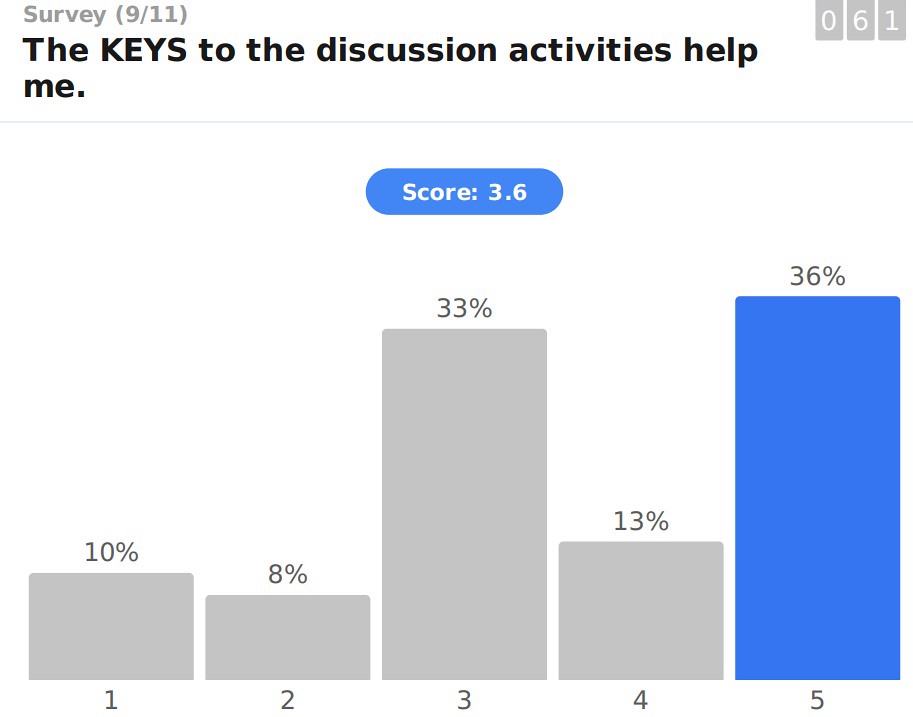 |
| In the open-ended portion of this survey, one student wrote "Didn’t know there were KEYS for discussion" |
I've been using PollEv to capture non-anonymous content knowledge. The activity is NOT worth points but it gives me an idea of what they are already understanding and what I need to plan to teach them that week and the next week.
I chose to use an OER, called OpenStax. It's something a colleague suggested to me a few years ago but I didn't feel secure enough in my job to do something like that unilaterally. Now, I feel more empowered to do what is best for students regardless of how my colleagues may react. So far, I like the change. The quality of the book is equivalent. There's no free online homework, but as part of the "flipped" model, I'm having students do problems DURING class instead of at home. The book (online or offline in .pdf) is FREE for the students.
Creative Exercises started out as an in-class exercise but have become a take-home assignment. Students are practicing showing their work, making their thoughts easy to see, writing down everything they know about a writing prompt. This goes together with one of my goals for the students which is teaching them about "Writing to Learn." In the process of writing down your thoughts, you can teach yourself things, which is why I strive to maintain this blog. Maybe in the future, I will have them upload their Chapter Outlines.
There's a YouTube playlist where students can go and watch the lectures that I would have done during class. I learned how to put hyperlinks in the video description so that students don't have to watch the entire video, they can skip ahead to topics that they want to know more about. I'm not sure how this is going, most of the feedback says that the videos aren't helpful.
The exam involves re-working. The in-class exam time is for students to show what they know in that moment without any help and with only a small set of reference information. Then they have a few weeks to revise their work and resubmit. This revision is submitted online. I'm giving 6 exams instead of 3 exams and 3 quizzes. The last two exams are comprehensive, with the idea that the first one will prepare them to do better on the second one.
Everything is available online to print and turn in. The due dates aren't rigid. The groupwork allows for flexibility if a person misses one class here and there. I've had a much easier time accommodating students who miss class for a religious holiday or doctor's appointment. Students perceive me as being more understanding, but in truth I just have a more flexible approach to assignments.
I also don't feel pressured to grade all 75 at once. I can sit down and grade for 10 minutes, then walk away. This takes the pressure off of me to do "marathon grading." Clicking the rubric is pretty effortless and then I can type comments faster than I would have been able to write them. I feel like having a rubric removes some of the bias. Also, since students upload their work, they aren't writing their name on it. I could do anonymous grading in Canvas to further remove bias.
Clearly there were other topics I thought about writing about: transportation, chemistry, climate change, community, Metrolink, politics, weight loss and vitamins. There just isn't time now. But seriously, GO VOTE.
It's taken me a long time and a lot of soul searching to get to the place where I could overhaul my CHEM 101 course so dramatically. I've been attending a Faculty Learning Community about taking an equity-minded approach to course design. What I can see is that these changes have had an equalizing effect on my class. I no longer penalize students for what they can't do. Instead I enable them to do more.
Labels:
career,
chemistry,
climate change,
community,
equity,
interdisciplinary,
Metrolink,
motivation,
Northridge,
politics,
sustainability,
transportation,
vitamins,
weight loss
Thursday, September 20, 2018
September to Remember
I am running a bit tired today and I thought... what could cheer me up? So I came to write a quick blog post about September and thought of this song~~~~
I really need to go rollerskating. I miss my rollerdiscoboogielife.
Since school has started, I've been reading "Becoming Nicole" and I was really looking forward to attending the "New Student Convocation" because Nicole Maines was the keynote speaker.
The event was slightly ruined by a group protesting EO1100. There are reasons why the CSU is having difficulty graduating 100% of incoming students. Some people believe that our students are taking unnecessary courses. Some of those courses include remedial math and remedial writing classes. Some of those courses include Africana studies, American Indian studies, Asian-American studies, Central American studies and gender and women’s studies. The instructors who teach those courses would see their enrollment drop (and job cuts) if students are no longer required to take those courses.
I'm sad that people don't graduate. I'm sad that Nicole's keynote was overshadowed by a group of angry people. I'm sad that students are coming to a university that is not able to eliminate opportunity and achievement gaps. I'm sad that people are going to be losing their part-time teaching jobs. It's a complicated issue.
EO1110 retires the placement tests in math and English, instead focusing on offering non-remedial courses only. Our department is filling our classes to the fire code limit to balance the budget because our department gets a certain amount of money per enrolled student, but... How does a packed and uncomfortable classroom support student retention and success? Sometimes I feel like the CSU-level initiatives and what our department does are in direct conflict.
Someone mentioned that their son is studying GIS. I got jealous. I have to get ready for class now. I'm trying lots of new ways to use technology in the classroom. I can't say if any of it is working yet.
I really need to go rollerskating. I miss my rollerdiscoboogielife.
Since school has started, I've been reading "Becoming Nicole" and I was really looking forward to attending the "New Student Convocation" because Nicole Maines was the keynote speaker.
The event was slightly ruined by a group protesting EO1100. There are reasons why the CSU is having difficulty graduating 100% of incoming students. Some people believe that our students are taking unnecessary courses. Some of those courses include remedial math and remedial writing classes. Some of those courses include Africana studies, American Indian studies, Asian-American studies, Central American studies and gender and women’s studies. The instructors who teach those courses would see their enrollment drop (and job cuts) if students are no longer required to take those courses.
I'm sad that people don't graduate. I'm sad that Nicole's keynote was overshadowed by a group of angry people. I'm sad that students are coming to a university that is not able to eliminate opportunity and achievement gaps. I'm sad that people are going to be losing their part-time teaching jobs. It's a complicated issue.
EO1110 retires the placement tests in math and English, instead focusing on offering non-remedial courses only. Our department is filling our classes to the fire code limit to balance the budget because our department gets a certain amount of money per enrolled student, but... How does a packed and uncomfortable classroom support student retention and success? Sometimes I feel like the CSU-level initiatives and what our department does are in direct conflict.
Someone mentioned that their son is studying GIS. I got jealous. I have to get ready for class now. I'm trying lots of new ways to use technology in the classroom. I can't say if any of it is working yet.
Labels:
activism,
advocacy,
climate change,
cross-training,
dancing,
diversity,
education,
fall,
goals,
hate,
hormones,
interdisciplinary,
learning,
love,
Northridge,
rollerskating,
skating,
teaching
Monday, August 20, 2018
#BCCE2018 Part 1
I can't believe I've been back for two weeks and I'm only one-third done summarizing what I learned!
I also wanted to connect with alumni from the class of '98. Education was a big part of my life and I value the formative years I spent at a Math and Science magnet school. That was even before we called it "STEM."
One of the things I learned on the tour of the school is that Rich Molettiere is still working there as the Technology Coordinator. He issued me my first e-mail address, which was on the intranet. Kids these days take e-mail for granted. I feel like our school was ahead of the game in that we had a way to message our teachers through intranet. He is the one who assigned me the moniker "hamerk02" which I still use today as a unique identifier online. I've never thought about who hamerk01 might be until this minute.
I also learned that Cecilia Nolan is still working there. She was the coach of our dance team.
I traveled to Nebraska first to see family and attend the Pawnee County fair.Bikes on board @MetrolinkVC en route to @fly_BUR train 102 #bikecar #taketransit pic.twitter.com/vKtK9C2y5A— bikecar101 (@bikecar101) July 24, 2018
I also wanted to connect with alumni from the class of '98. Education was a big part of my life and I value the formative years I spent at a Math and Science magnet school. That was even before we called it "STEM."
Heading to @2018BCCE from @OMAairport to @MDW on @SouthwestAir Had a fantastic 20 year high school class reunion @OPS_NorthHigh— Dr. Kayla A. Kaiser (@hamerk02) July 29, 2018
One of the things I learned on the tour of the school is that Rich Molettiere is still working there as the Technology Coordinator. He issued me my first e-mail address, which was on the intranet. Kids these days take e-mail for granted. I feel like our school was ahead of the game in that we had a way to message our teachers through intranet. He is the one who assigned me the moniker "hamerk02" which I still use today as a unique identifier online. I've never thought about who hamerk01 might be until this minute.
I also learned that Cecilia Nolan is still working there. She was the coach of our dance team.
Labels:
Burbank,
career,
chemistry,
climate change,
community,
cross-training,
cycling,
education,
goals,
learning,
Metrolink,
motivation,
Nebraska,
Northridge,
nutrition,
running,
summer,
transportation,
travel
Friday, August 10, 2018
Why Blog? Part II
Why start a blog?
http://blogs.scientificamerican.com/literally-psyched/2013/04/12/why-grad-schools-should-require-students-to-blog/somewhere between 40 and 50 percent of students will quit their doctoral programs
1/3 of that attrition will happen at the dissertation-writing stage
if you write regularly, it will be less overwhelming when you get to that point
Riley Elliott TEDxAuckland
1.8 million scientific articles are published every year50% of them are read only by the author and the editor
90% of them are never cited and shared
Nowadays people gather information from social media, television, and the internet
http://youtu.be/GA8RsnezFIg
people in academia these days are promoting their journal articles on social media and blogs to increase traffic and citations
Science and Technology: Public Attitudes and Understanding
http://www.nsf.gov/statistics/seind12/c7/c7h.htm.The Internet is the main source of information for learning about specific scientific issues such as global climate change and biotechnology. Americans are now about equally likely to rely on the Internet as on television as their primary source of general science and technology (S&T) information.
Many Americans continue to give multiple incorrect answers to questions about basic factual knowledge of science or the scientific inquiry process. In the United States, levels of factual knowledge of science have been stable for more than a decade.
Identify your audience
The average reading level of Americans is between eighth and ninth grade. NPR’s story was written at an 8.2 grade level. http://www.npr.org/blogs/itsallpolitics/2012/05/21/153024432/sophomoric-members-of-congress-talk-like-10th-graders-analysis-showsit is important if you are writing a blog on a scientific topic to keep the blog readable and relatable
Some of my writing
Going Green Flesch-Kincaid Grade Level: 4.69The Inagural Blog Post Flesch-Kincaid Grade Level: 5.92
Selective Serotonin Reuptake Inhibitors Flesch-Kincaid Grade Level: 8.92
Fountain of Youth Flesch-Kincaid Grade Level: 9.27
A scientific abstract Flesch-Kincaid Grade Level: 14.79
http://sarahktyler.com/code/sample.php
BLOGGING is all about creativity.
Your original ideas can take center stage, uncensored. Here are some best practices:- Use Categories (tags)
- Create an engaging Meta-description (first 160 characters) = your thesis statement
- Focus on having an Eye-catching title
- Include In-text links (hyperlinks) which will increase traffic to your blog
- Embed Social sharing buttons such as "tweet this"
- Use Hootsuite to promote repeatedly, also use Editorial calendar to Schedule Posts
- Learn how to use Headings (H1) in html code to improve readability
- Include Images (convey emotion, illustrate a metaphor, evoke curiosity, complement your title)
- Include factual content (with sources) and write professionally (edit and proofread)
- Create a careful bio that established credibility and a way for readers to contact you
How long should each post be?
Your word count per post may vary between 100-1000 and that’s OK. Link to longer content.http://www.socialmediaexaminer.com/26-tips-for-writing-great-blog-posts/
Link your social media (or don’t).
Consider connecting your blog to your facebook or twitter feed.Content first = write what you know
Adopt a publishing schedule = one post per month or one post per week, for example
Let your content be driven by a theme = goes together with identifying your audience
Keep it professional = blogs are public and your identity may or not be anonymous
http://chrisguillebeau.com/how-to-start-a-blog/
Does my blog matter?
Hundreds of millions of blogs are online today. Thousands more are started every day. Anyone can start a blog in 5 minutes, but very few will start blogs that matter.http://fizzle.co/start-a-blog-that-matters
If the purpose of your blog is for yourself only, then you don't have to worry about number of visitors. I prefer to keep my blog ad-free, which compromises the amount of traffic that google will direct to my site. However, I feel it makes my page more readable so that the audience is organic and focused on my content. Also, I use it to uncover themes in my life and to track events and items that I have recycled so that I can manage my tendency to hoard physical objects that I have attached sentimental value to but that are really arcane pieces of junk.
How to engage effectively
Blogger has a feature where you can follow other blogs like yours. Alternative is RSS feeds. RSS stands for Really Simple Syndication or Rich Site SummaryAnother idea is to create a “Follow this blog via email” listserv.
Use the 411 formula to manage your engagement
4 retweets, 1 response back, 1 original posting = 30 minutes per day
People following you for one reason don’t want to hear about stuff in your hobby area
Blogging is such a great way to get expertise out.
When you read/follow a blog, make sure to comment to get your name out.
It is good to engage people. Start lively dialogue. Could be a link to a potential employer to connect you with a job. People within companies support blogging.
It brings people closer to customers, companies can build loyal following.
I learned this at the Virtual Networking for Grad Students event at University of California, Riverside
http://events.ucr.edu/cgi-bin/display.cgi?comp_id=33367:20101104153000
hosted by Jan McCorkle, UCR Career Services
Blogging by the numbers
43% of bloggers use Wordpress35% of bloggers use Blogger
16% of bloggers use Tumblr + TypePad + Posterous
6% use other platforms
31 million bloggers in the US
81% never make $100 from blogging
Wordpress has 42 million blogs
329 million people view a blog
25 billion pages are viewed each month
500,000 new posts a day
400,000 daily comments
35% actively blog at least one time per month
65% haven’t updated their blog in one year or more
60% of businesses have a business or company blog
http://www.jeffbullas.com/wp-content/uploads/2012/08/State-of-Blogging-in-2012.jpg
Between 2007 (launch) and the end of 2011, Tumblr hosted over 39 million blogs
Based on the 19-digit ID for Blogger, there are at least 38 million Blogspots (June 2009)
http://pulsed.blogspot.com/2009/06/how-many-blogspot-blogs.html
Above all, don't be afraid
There are so many blogs out there, it's unlikely that you will garner a huge audience, so go ahead and write your heart out. You may just find a kindred spirit or two out there who really get a kick out of what's going on in your mind.
Why Blog?
I recommend watching this video with the subtitles (CC) turned on since the resolution is terrible! My how technology evolves!
So yeah, the video above was recorded with a Sony Handycam DCR-H38. The operating manual is copyright 2007. We bought that camera for our wedding instead of hiring a videographer. Then, on the day of the wedding, nobody could find the tripod so the footage of our ceremony has mumbled voices of my sister-in-law saying that her arm is about to fall off. Luckily, it was a 20 minute deal.
Anyhoo-- the Sony Handycam DCR-H38 had 340K "actual" Pixels for video, which if you're savvy at the metric system is 0.34 Megapixels. It was one of the last cameras to use cassettes. The DVM60 cassette was so-called because it holds 60 minutes of footage. The battery only works for 95 minutes of continuous recording, so that was enough to record the "Chemistry TA Workshop" mini-lessons when I taught the course in FA14.
It was pretty tedious using my super-old Gateway laptop (which I got in 2002 as a graduation gift after my bachelor's degree) with IEEE firewire to transfer the students' minilessons from the camera to the computer to post them to YouTube. I had to remove everything else from that computer to make room for the 3 or 4 video files and then transfer those to another computer on a flash drive so that they could be put online for students to view and critique.
By the time we arrived at FA15, I was the proud owner of a GoPro Hero4 Silver. The videos are considered HD and the max resolution is 3840 x 2160 = 8294400 or 8.3 Megapixels. Thanks to a tech-savvy student, I record my lectures using the 1080s / 60 / Wide setting when I teach in a classroom with a larger whiteboard than the one shown below. So that's 1920 x 1080 = 2073600 or 2.1 Megapixels.
I started recording every single lecture in CHEM 100, 101 and 102 (intro and gen chem) and posting them to YouTube. This was tedious and I never found any evidence that it was useful for students. Also, creating captions for the videos was nearly impossible, with the exception of one semester where I had a hearing-impaired student who requested a transcriptionist and that generous lady cc'd me a copy of the transcript. These playlists are unlisted but I can always share one video at a time for students who miss class and say "What did I miss?" It was also useful for me to reflect on my teaching style and the extent to which I was delivering "another boring lecture" most days.
The GoPro Hero4 saves to a microSD card, which I have 32GB. The memory and the battery are good for about 2 hours, which is plenty long enough to record a 75 minute class session. Initially, I left the camera inside a plastic case which made it easier to mount stably on a tripod, but I found that that dulled the audio quality. One side-benefit of recording your lectures is that students tended to make fewer interruptions such as taking text messages or arriving late or leaving early. Perhaps a side drawback was that students were more shy with asking questions. I don't know this for sure, I didn't ask them, but I suspect it was the case. Our biology colleagues have several "smart" classrooms that enable lecture-capture, so many of our students are used to this luxury. I don't know any other chemistry professors in our department that have tried this.
With the GoPro Hero4 I had to spend quite a lot of time downloading the video, processing the video from AVI to MP4 so that the file could be uploaded to YouTube. The whole process took a minimum of 8 hours for 4 x 12-minute minilessons.
I wrote this post about smartphones and tablets in my classroom exactly one year before I got my first smartphone, yes I was a late-adopter. I had a blackberry-like device from 2011 until 04/23/16.
The Samsung Galaxy S7 which I used to record the video above in FA16 has the capability to record UHD (3840 x 2160 = 8294400 or 8.3 Megapixels), but the default setting is FHD (1920 x 1080 = 2073600 or 2.1 Megapixels). The memory available is only 32GB so there's no sense in increasing the filesize. The nice thing about capturing video on a smartphone is that it automatically goes to the cloud, eliminating the need for cables and such.
I had a great time using Pearson LearningCatalytics in Spring and Summer 2017, but I didn't teach the Chemistry TA Workshop (CHEM 500) in FA17 since I was busy at that time teaching Physical Chemistry lab, which runs concurrently. I'm preparing to teach CHEM 500 again this FA18 and I'm considering my options for recording the students. In FA16, I recorded about half their lessons with the GoPro and half their lessons with the Samsung Galaxy S7. I meant to ask them which they preferred since I split them randomly. Some of them had their first lesson with the GoPro and some of them had their first lesson with the Samsung Galaxy, then I switched it, but I forgot to ask them at the end if they had a preference. To be honest, I used my phone when the GoPro was dead and vice versa.
When the video was recorded on my phone, I backed it up to my Google Photos and then shared the link directly from there. So I think that's my answer. Unless my Google Photos gets completely full of MiniLessons. Another thing I do is use my smartphone to digitize students' lab notebooks. Then I grade them on the photos, which I can zoom in. Some students' handwriting is soooo tiny. Also if the printouts of the data are low quality, I can enhance the contrast digitally. But those photos are also taking up room in my cloud. When does one have time to clean all that out? Oh yeah, summer!
I want to tell my students about blogging. That blogging is "WRITING TO LEARN" and sometimes you discover things about yourself like I just did. I just convinced myself that the resolution of the GoPro and the Samsung are equal but the workload after acquiring the video is more streamlined on a smartphone. Although-- I just learned on the Amtrak from a train friend that you can pair your GoPro with your smartphone and automatically videos can go from the GoPro to the smartphone to the cloud, which I have yet to figure out. Maybe it's not worth it. But I do need to get some kind of tripod that holds my phone. That would be handy.
I want to tell my students that sometimes when you sit down and you think you're going to write about blogging and then you end up writing about what camera you plan to use next semester, that's a good thing. It takes the stuff you're worrying about and puts it out there. It gets the ideas out of your head and into the cloud. I firmly believe that the internet is now an extension of my brain. I mean, my brain is amazing, but it's also nice to dump some thoughts into the blogosphere and clear my head.
Here is a nice step-by-step tutorial for those interested in starting a blog.
http://onlinecourselady.pbworks.com/w/page/12763791/blogger
And this takes us full circle to the first video embedded in this post, Why Blog?
Topics for a future post: Camtasia, Snagit and HP5. See follow up lesson plan here.
So yeah, the video above was recorded with a Sony Handycam DCR-H38. The operating manual is copyright 2007. We bought that camera for our wedding instead of hiring a videographer. Then, on the day of the wedding, nobody could find the tripod so the footage of our ceremony has mumbled voices of my sister-in-law saying that her arm is about to fall off. Luckily, it was a 20 minute deal.
Anyhoo-- the Sony Handycam DCR-H38 had 340K "actual" Pixels for video, which if you're savvy at the metric system is 0.34 Megapixels. It was one of the last cameras to use cassettes. The DVM60 cassette was so-called because it holds 60 minutes of footage. The battery only works for 95 minutes of continuous recording, so that was enough to record the "Chemistry TA Workshop" mini-lessons when I taught the course in FA14.
It was pretty tedious using my super-old Gateway laptop (which I got in 2002 as a graduation gift after my bachelor's degree) with IEEE firewire to transfer the students' minilessons from the camera to the computer to post them to YouTube. I had to remove everything else from that computer to make room for the 3 or 4 video files and then transfer those to another computer on a flash drive so that they could be put online for students to view and critique.
By the time we arrived at FA15, I was the proud owner of a GoPro Hero4 Silver. The videos are considered HD and the max resolution is 3840 x 2160 = 8294400 or 8.3 Megapixels. Thanks to a tech-savvy student, I record my lectures using the 1080s / 60 / Wide setting when I teach in a classroom with a larger whiteboard than the one shown below. So that's 1920 x 1080 = 2073600 or 2.1 Megapixels.
I started recording every single lecture in CHEM 100, 101 and 102 (intro and gen chem) and posting them to YouTube. This was tedious and I never found any evidence that it was useful for students. Also, creating captions for the videos was nearly impossible, with the exception of one semester where I had a hearing-impaired student who requested a transcriptionist and that generous lady cc'd me a copy of the transcript. These playlists are unlisted but I can always share one video at a time for students who miss class and say "What did I miss?" It was also useful for me to reflect on my teaching style and the extent to which I was delivering "another boring lecture" most days.
The GoPro Hero4 saves to a microSD card, which I have 32GB. The memory and the battery are good for about 2 hours, which is plenty long enough to record a 75 minute class session. Initially, I left the camera inside a plastic case which made it easier to mount stably on a tripod, but I found that that dulled the audio quality. One side-benefit of recording your lectures is that students tended to make fewer interruptions such as taking text messages or arriving late or leaving early. Perhaps a side drawback was that students were more shy with asking questions. I don't know this for sure, I didn't ask them, but I suspect it was the case. Our biology colleagues have several "smart" classrooms that enable lecture-capture, so many of our students are used to this luxury. I don't know any other chemistry professors in our department that have tried this.
With the GoPro Hero4 I had to spend quite a lot of time downloading the video, processing the video from AVI to MP4 so that the file could be uploaded to YouTube. The whole process took a minimum of 8 hours for 4 x 12-minute minilessons.
I wrote this post about smartphones and tablets in my classroom exactly one year before I got my first smartphone, yes I was a late-adopter. I had a blackberry-like device from 2011 until 04/23/16.
The Samsung Galaxy S7 which I used to record the video above in FA16 has the capability to record UHD (3840 x 2160 = 8294400 or 8.3 Megapixels), but the default setting is FHD (1920 x 1080 = 2073600 or 2.1 Megapixels). The memory available is only 32GB so there's no sense in increasing the filesize. The nice thing about capturing video on a smartphone is that it automatically goes to the cloud, eliminating the need for cables and such.
I had a great time using Pearson LearningCatalytics in Spring and Summer 2017, but I didn't teach the Chemistry TA Workshop (CHEM 500) in FA17 since I was busy at that time teaching Physical Chemistry lab, which runs concurrently. I'm preparing to teach CHEM 500 again this FA18 and I'm considering my options for recording the students. In FA16, I recorded about half their lessons with the GoPro and half their lessons with the Samsung Galaxy S7. I meant to ask them which they preferred since I split them randomly. Some of them had their first lesson with the GoPro and some of them had their first lesson with the Samsung Galaxy, then I switched it, but I forgot to ask them at the end if they had a preference. To be honest, I used my phone when the GoPro was dead and vice versa.
When the video was recorded on my phone, I backed it up to my Google Photos and then shared the link directly from there. So I think that's my answer. Unless my Google Photos gets completely full of MiniLessons. Another thing I do is use my smartphone to digitize students' lab notebooks. Then I grade them on the photos, which I can zoom in. Some students' handwriting is soooo tiny. Also if the printouts of the data are low quality, I can enhance the contrast digitally. But those photos are also taking up room in my cloud. When does one have time to clean all that out? Oh yeah, summer!
I want to tell my students about blogging. That blogging is "WRITING TO LEARN" and sometimes you discover things about yourself like I just did. I just convinced myself that the resolution of the GoPro and the Samsung are equal but the workload after acquiring the video is more streamlined on a smartphone. Although-- I just learned on the Amtrak from a train friend that you can pair your GoPro with your smartphone and automatically videos can go from the GoPro to the smartphone to the cloud, which I have yet to figure out. Maybe it's not worth it. But I do need to get some kind of tripod that holds my phone. That would be handy.
I want to tell my students that sometimes when you sit down and you think you're going to write about blogging and then you end up writing about what camera you plan to use next semester, that's a good thing. It takes the stuff you're worrying about and puts it out there. It gets the ideas out of your head and into the cloud. I firmly believe that the internet is now an extension of my brain. I mean, my brain is amazing, but it's also nice to dump some thoughts into the blogosphere and clear my head.
Here is a nice step-by-step tutorial for those interested in starting a blog.
http://onlinecourselady.pbworks.com/w/page/12763791/blogger
And this takes us full circle to the first video embedded in this post, Why Blog?
Topics for a future post: Camtasia, Snagit and HP5. See follow up lesson plan here.
Labels:
career,
chemistry,
cycling,
education,
fall,
goals,
interdisciplinary,
money,
motivation,
Northridge,
Pasadena,
Riverside,
science,
summer,
teaching,
teamwork,
technology,
vintage,
writing
Monday, July 23, 2018
Second Nebraska Trip Packing List
It's the day before my second visit to Nebraska and I'm packing. Or at least I'm thinking about packing. I was doing some last minute digging in the garage and I found my old sound generator, which can provide soothing ocean waves even without wifi.
The weather in South Bend, IN where the conference is also has a chance of showers. I'm doing a "fun run" on Monday morning and then presenting on Tuesday morning. So I'll need running shoes/workout clothes and business clothes.
Besides my sound generator, I want to bring all my other toys (rollerskates, folding bike, etc.) but there's only so much room in the suitcase that I'm bringing (as soon as I decide which one that is). I'm leaning towards a rolling bag this time since it was a bit of a drag carrying my duffel bag last trip.
I don't need to bring the folding bike because: I've rented a car, Omaha has B-Cycle (docked bikehsare, based near where I'm staying) and South Bend has LimeBike (dockless bikeshare). I don't need to bring rollerskates because: that is not the purpose of the trip, they're heavy, and there won't be time to go skating.
We are going to try to squeeze in a dance party, so maybe I can bring something dance-worthy. My brain is driving me crazy because I thought that through organizing the house, I would find some handwritten notes from my days in grad school, unfortunately they haven't turned up yet.
I'm attending my 20-year high school class reunion, so I should bring something to wear for the tour of the school and the social event that evening. Nothing too fancy. Then I'm off to the conference. It would be nice to have some traveling clothes (read PJs) that are comfy.
ACS Meetings App is a way to schedule your conference time. It allows selecting concurrent events, so that if there is a cancellation in one session you can jump into another. I found the most fabulous dress at Goodwill, during my shopping extravaganza which will work for both the class reunion and my talk at BCCE.
My brother-in-law was asking me last night, in all earnestness, why take a train? I tried to explain how you have the freedom to walk throughout the train while it's moving and you can enjoy the scenery from your seat or the observation car.
If you want a formal dining experience, you can eat in the dining car. See this blog for some other really helpful tips. Also for humor watch the film Silver Streak. We cross the state of Kansas overnight, waking up on the second day in La Junta, Colorado (Fresh Air Stop #2).
If you don't mind bodega (7-11 a.k.a. truck stop) food then you can visit the cafe car. It's downstairs of the observation car. There's also seating down there, which can be another place to sit. It should be a really beautiful day going through Colorado, New Mexico and Arizona.
Looking at the weather forecast, it's going to be cooler there than it will be here. However there is a chance of rain. So I guess I'll be packing an umbrella.
Of the events on the list: hang out with uncle, grandma, grandma, sister, sister, aunt, mom and dad. I definitely have to practice my talk. So I'll need a cable to connect my computer to the hotel TV. I'll also need some clothes to wear to the Pawnee County Fair.
 |
| Burchard, NE |
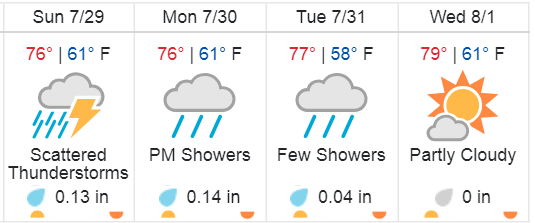 |
| South Bend, IN |
Besides my sound generator, I want to bring all my other toys (rollerskates, folding bike, etc.) but there's only so much room in the suitcase that I'm bringing (as soon as I decide which one that is). I'm leaning towards a rolling bag this time since it was a bit of a drag carrying my duffel bag last trip.
I don't need to bring the folding bike because: I've rented a car, Omaha has B-Cycle (docked bikehsare, based near where I'm staying) and South Bend has LimeBike (dockless bikeshare). I don't need to bring rollerskates because: that is not the purpose of the trip, they're heavy, and there won't be time to go skating.
We are going to try to squeeze in a dance party, so maybe I can bring something dance-worthy. My brain is driving me crazy because I thought that through organizing the house, I would find some handwritten notes from my days in grad school, unfortunately they haven't turned up yet.
I'm attending my 20-year high school class reunion, so I should bring something to wear for the tour of the school and the social event that evening. Nothing too fancy. Then I'm off to the conference. It would be nice to have some traveling clothes (read PJs) that are comfy.
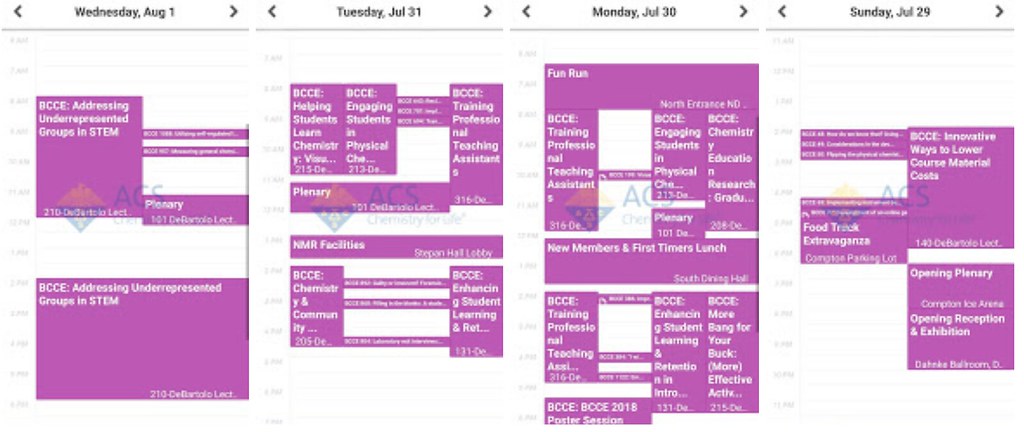 |
| BCCE Meeting Schedule |
I'm coming back on the Amtrak. Items that made that part of the trip better included: noise-canceling headphones, a black bandanna that I could use as an eye-mask, a cooler bag to bring my own food (but I might not do that on this trip) and a neck pillow (good for planes and trains).
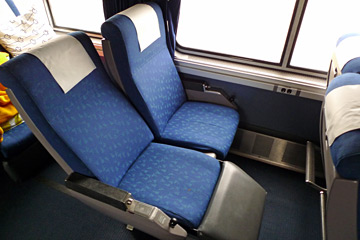 |
| Amtrak Coach Seat |
I had a really great time on Amtrak Empire Builder so I'm really looking forward to the Southwest Chief. We're leaving Chicago in the afternoon, going through a tiny corner of Iowa, reaching Kansas City by evening (Fresh Air Stop #1).
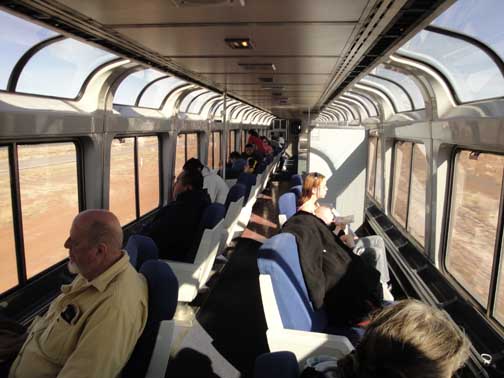 |
| Amtrak Observation Car |
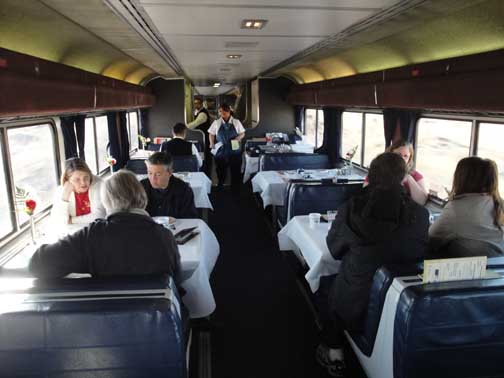 |
| Amtrak Dining Car |
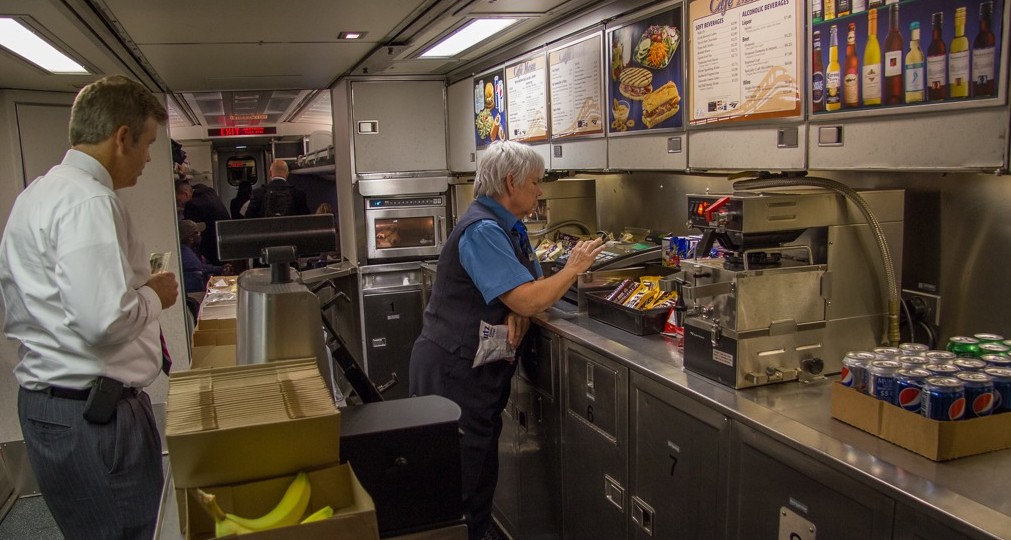 |
| Amtrak Cafe Car |
Albuquerque and Flagstaff are Fresh Air Stops #3 and #4, respectively. A fresh air stop is where you can get off the train and walk along the platform. I do some calisthenics and plyometrics to get my circulation going and to keep my metabolism running.
Since I've never booked a sleeper compartment, I can't say whether they're better or worse than coach. I did borrow these pictures from Google Images since I'm always too shy to take photos of people when I'm on the train. You never know who won't want to be photographed.
The second overnight goes through the desert part of California (Needles, Barstow, Victorville, San Bernardino, Riverside) and hopefully I'll be waking up around Fullerton, CA. We arrive in Los Angeles in the morning around 8am.
Friday, July 6, 2018
Nebraska Trip Packing List
Here's what I brought on my plane/train summer trip from Northridge -train to- Burbank -plane to- Portland -train to- Fargo -car to- Omaha -plane to- Burbank -car to- Northridge over a two week period. The items with a star are things I wore or used prior to arriving in Fargo.
Three dresses, sleeveless
*Two yoga pants, knee and ankle length
Two polo shirts
Two jeans, ankle and shoe length, belt
*Flip flops and athletic shoes
*Bra and sports bra
*PJ pants
*USA t-shirt, CicLAvia t-shirt
*Sleeveless graphic t-shirt
5 pairs socks
10 pairs underwear
*Watch and IDY bracelet
*Headband and hair clips
*Sunhat
Burt's bees, Lipstick: red and pink
*Headphones and Phone charger
*Purse and camera case, cross-body
*Stand to prop up phone
*Journals to write in and pens
*ACS chapter reports
*Toothpaste, toothbrush
*Sunscreen, SPF 30 and 50, face and body
Contact lenses and solution
*Glasses and sunglasses
*Shampoo/conditioner (2 in 1)
*Face moisturizer
*Face wash
*Hair comb
Qtips, Kleenex
Gifts: 28 Visit Santa Clarita bags
stainless steel drinking straws and brushes
I ended up doing two loads of laundry in Fargo and wore everything more than once. I definitely could have traveled with fewer pairs of underwear, but that's the one thing I never want to run out of. It's an experience doing a sponge bath in a moving train bathroom, but I even washed my hair in the sink and it was worth it.
We had fun in Fargo finding silverware to go into the 'Visit Santa Clarita' bags, which were originally made for glasses. I was pumped when I got together with my cousin from Denver (who is currently working in London) and my aunt from New York and they were both really excited about stainless steel straws and reducing single-use plastic utensils.
I brought 29 bags and I came home with only 12 so that means that my family members actually grabbed them (as intended). Since we checked our luggage on the flight home, there was no problem with bringing the sharp metal objects home in my carry-on bag.
According to RESET Carbon Ltd. flying in a short-haul aircraft produces 50% more carbon dioxide emissions per passenger kilometer than taking Amtrak. Driving produces about 25% more carbon dioxide emissions per passenger kilometer than taking Amtrak. Altogether, I traveled 7000 km and produced 1.676 metric tons of carbon dioxide. I feel bad about this, any suggestions for offset?
Three dresses, sleeveless
*Two yoga pants, knee and ankle length
Two polo shirts
Two jeans, ankle and shoe length, belt
*Flip flops and athletic shoes
*Bra and sports bra
*PJ pants
*USA t-shirt, CicLAvia t-shirt
*Sleeveless graphic t-shirt
5 pairs socks
10 pairs underwear
*Watch and IDY bracelet
*Headband and hair clips
*Sunhat
Burt's bees, Lipstick: red and pink
*Headphones and Phone charger
*Purse and camera case, cross-body
*Stand to prop up phone
*Journals to write in and pens
*ACS chapter reports
*Toothpaste, toothbrush
*Sunscreen, SPF 30 and 50, face and body
Contact lenses and solution
*Glasses and sunglasses
*Shampoo/conditioner (2 in 1)
*Face moisturizer
*Face wash
*Hair comb
Qtips, Kleenex
Gifts: 28 Visit Santa Clarita bags
stainless steel drinking straws and brushes
I ended up doing two loads of laundry in Fargo and wore everything more than once. I definitely could have traveled with fewer pairs of underwear, but that's the one thing I never want to run out of. It's an experience doing a sponge bath in a moving train bathroom, but I even washed my hair in the sink and it was worth it.
We had fun in Fargo finding silverware to go into the 'Visit Santa Clarita' bags, which were originally made for glasses. I was pumped when I got together with my cousin from Denver (who is currently working in London) and my aunt from New York and they were both really excited about stainless steel straws and reducing single-use plastic utensils.
I brought 29 bags and I came home with only 12 so that means that my family members actually grabbed them (as intended). Since we checked our luggage on the flight home, there was no problem with bringing the sharp metal objects home in my carry-on bag.
According to RESET Carbon Ltd. flying in a short-haul aircraft produces 50% more carbon dioxide emissions per passenger kilometer than taking Amtrak. Driving produces about 25% more carbon dioxide emissions per passenger kilometer than taking Amtrak. Altogether, I traveled 7000 km and produced 1.676 metric tons of carbon dioxide. I feel bad about this, any suggestions for offset?
Labels:
climate change,
Colorado,
family,
goals,
green,
love,
motivation,
Nebraska,
New York,
picnic,
politics,
Santa Clarita,
simplicity,
sustainability,
teamwork,
travel,
upcycling,
women
Amtrak Empire Builder (Portland to Fargo)
This summer I am taking two long-distance trips on Amtrak: Empire Builder and Southwest Chief. I took a plane from Los Angeles to Portland and the Amtrak from Portland to Fargo. My sister sold her house there and I spent a week with her, helping her move.
When I arrived at Portland airport, I boarded the light rail there to get to the Amtrak station. The light rail (MAX) in Portland was easy to navigate.
The Portland Amtrak station is totally cute! There are bikeshare bikes there (and probably in most major cities by now) but the Portland bikeshare bikes are branded with a Nike swoosh.
Empire Builder simultaneously originates in Seattle, WA and Portland, OR in the late afternoon. The individual trains merge in Spokane, WA in the middle of the night. Fresh air stops like this allow you to disembark and stretch your legs. Have a coke, smoke and a joke as my art teacher used to say.
This is what I brought in a cooler
*2 bags (florets) broccoli
*1 bag (8oz) mushrooms
*8 C honeydew melon
*1 bag (2C) mixed nuts
*1 bag (30) dried apricots
*1 bag (8) small pancakes
*1 bag (4oz) beef jerky
*1 flat cake (900g) banana bread
*3 medium yellow nectarines
*Empty ziploc for ice
*Cooler bag
*Empty water bottle
This is what I purchased at the station or on the train
*2 cans soda
*1 bag each: combos, gardettos
*2 cups coffee: $2 each
*1 tuna sandwich on wheat
*1 Greek yogurt cup: $2.50
It was fantastic to take the Metrolink from Northridge to Burbank Airport. Starting the trip with a train ride put me in a good mood.Enjoying this #junegloom @wunderground @Metrolink Thanks for the ride to @fly_BUR just $5.50 from #Northridge station on Ventura County line train 104. Clouds this morning will give way to generally sunny skies for the afternoon. High 83F. 🌤 pic.twitter.com/1CQ8O1Blho— bikecar101 (@bikecar101) June 19, 2018
When I arrived at Portland airport, I boarded the light rail there to get to the Amtrak station. The light rail (MAX) in Portland was easy to navigate.
The Portland Amtrak station is totally cute! There are bikeshare bikes there (and probably in most major cities by now) but the Portland bikeshare bikes are branded with a Nike swoosh.
Onward from #PDX to Washington (state), Idaho and Montana @Amtrak #EmpireBuilder ❤ 🚅 🛤 ⛰ pic.twitter.com/K5sgHZsjDv— bikecar101 (@bikecar101) June 19, 2018
Empire Builder simultaneously originates in Seattle, WA and Portland, OR in the late afternoon. The individual trains merge in Spokane, WA in the middle of the night. Fresh air stops like this allow you to disembark and stretch your legs. Have a coke, smoke and a joke as my art teacher used to say.
There's a dining car, which is kind of like a restaurant on wheels. There's a cafe car, which is kind of like a coffee shop on wheels. Above the cafe is the observation car, which has floor to ceiling windows. When people gawk at how much time it takes to get somewhere by train, I show them this.Crossed the Willamette and Columbia rivers 🏞 🚅 🛤 #PacificNorthwest #EmpireBuilder pic.twitter.com/8HuYN3do3S— bikecar101 (@bikecar101) June 20, 2018
The next fresh air stop is Whitefish, MT which is the following morning. From there, expect breathtaking views of Glacier National Park. I saw lots of people white water rafting and I have to say the smells of the people boarding the train here were more fresh & clean than any detergent.Columbia River Gorge at White Salmon, WA #EmpireBuilder pic.twitter.com/squuM7qiBa— bikecar101 (@bikecar101) June 20, 2018
I met a white water rafting guide who talked me through some of the sights. He pointed out tiny waterfalls and docks where native people fish for salmon using traditional fishing poles made of wood. You get to have great conversations with strangers on Amtrak trips.Good morning Montana! #EmpireBuilder pic.twitter.com/Ar8MYkoSQH— bikecar101 (@bikecar101) June 20, 2018
— bikecar101 (@bikecar101) June 20, 2018Abruptly, you are in a flat part of Montana. Two fresh air stops, Shelby and Havre, may be cut short if the train is running behind schedule. Havre has an antique steam engine at its station, which is an impressive display, particularly popular with train enthusiasts.
In my experience, the dining car is first-come first-served. If you want to be served a sit-down meal in a formal setting, you need to get there right when the meal begins and let them know you will be 'dining' and they will schedule you a time to come back and be seated.Grab those handrails when moving through the train. We will be traveling at 79 mph along the Highline through eastern Montana and across North Dakota. #EmpireBuilder pic.twitter.com/hnVUzFa8rZ— bikecar101 (@bikecar101) June 20, 2018
— bikecar101 (@bikecar101) June 21, 2018I would not expect the staff to ask you if you want a seated meal, there were a few unhappy 'sleeper car' passengers that missed out on a seated meal because they thought their porter would assist in making their reservation. Nonetheless, they got a hot meal from the cafe car.
— bikecar101 (@bikecar101) June 21, 2018As for myself, I brought a variety of items listed below so that I didn't have to partake of the dining car on this particular trip. I highly recommend taking Empire Builder if you get a chance. I saw a couple with loaded touring bikes at the Glacier Park station, and I thought 'I would like to try that.'
This is what I brought in a cooler
*2 bags (florets) broccoli
*1 bag (8oz) mushrooms
*8 C honeydew melon
*1 bag (2C) mixed nuts
*1 bag (30) dried apricots
*1 bag (8) small pancakes
*1 bag (4oz) beef jerky
*1 flat cake (900g) banana bread
*3 medium yellow nectarines
*Empty ziploc for ice
*Cooler bag
*Empty water bottle
This is what I purchased at the station or on the train
*2 cans soda
*1 bag each: combos, gardettos
*2 cups coffee: $2 each
*1 tuna sandwich on wheat
*1 Greek yogurt cup: $2.50
Labels:
Amtrak,
beauty,
camping,
climate change,
community,
distance,
family,
goals,
green,
Los Angeles,
love,
money,
motivation,
mountains,
picnic,
simplicity,
summer,
transportation,
travel
Monday, June 4, 2018
So much science!
I spoke about atoms, molecules, reactions, and how chemistry is everywhere! I spoke about the good old 'Scientific Method' where you begin with an Observation followed by Hypothesis and then Experiments and lastly Results and Conclusions. After the class was over, I realized that I could have told a better story using more web-based resources. There's so much information publicly available and so much more behind various paywalls of academic publishing, I decided to pick one story and dig around to show you what resources I could use if I were to do the lesson again.
First of all, the Poisoner's Handbook is a fascinating account of how forensic science developed alongside environmental pollution and criminal homicide. There is a section there about leaded gasoline which is something students may be curious about if they have read the gas pumps having "Unleaded" gasoline. There's a reason the lead was added to fuel (to reduce engine knocking) and there was a reason that the lead was banned from fuel (it made people crazy).
I also chose the topic of lead poisoning because I love going to the Protein Data Bank and reading the stories they post on the Molecule of the Month. I love looking at the rendering of the protein, changing the colors and attributes, manually manipulating its orientation and putting it on auto-spin to appreciate its contours and crevices. What I like about this story is that it involves atoms (lead), small molecules (dimercaptosuccinic acid, DMSA) used in chelation therapy, large molecules (aminolaevulinic acid dehydratase or ALAD a.k.a. porphobilinogen synthase) and molecular assemblies.
 |
| DMSA-mercury(II) chelate |
Another interesting part about this story is that I came across the picture of DMSA-mercury(II) chelate using text-based google image searching. Apparently there are people who advocate the adminstration of DMSA to rid the body of toxicity from mercury amalgams (tooth fillings). http://zap.intergate.ca/dmsa.html I looked at that structure because I was wondering which of the groups on the DMSA would bind to the metal. We call ligands that make two contacts to the metal "bidentate" meaning like they are a set of teeth that chomps down from top and bottom. The rendering above shows DMSA making four points of contact. I had a feeling it wasn't right.
EDTA-iron(III) chelate
The only ligand I think of that makes that much contact is ethylenediaminetetraacetic acid (EDTA) which is considered a hexadentate ligand, making six points of contact. As it turns out I'm not the only chemist that was "triggered" by the rendering of DMSA-mercury(II) chelate and it was a graduate student who posted it to Wikipedia based on their own idea of what it would look like (not on a crystal structure). https://en.wikipedia.org/wiki/Talk:Dimercaptosuccinic_acid
So I created the small molecule in two dimensions using ChemSketch, then copied that structure and optimized it in ChemSketch3D. The teal spheres are carbon atoms. It's possible to rotate that small molecule just like with the protein. The only thing I couldn't figure out how to do in ChemSketch is how to make the coordinate-covalent bonds between the ligand and the heavy metal atom. Maybe it's possible and I don't know how to do it, or maybe it isn't possible in that software.
I also explored the enzyme ALAD in the BRENDA (BRaunschweig ENzyme DAtabase) and MetaCyc (Metabolic Encyclopedia). These two sources of information tell me what the enzyme does and what other enzymes are related (structurally similar), and which organisms express this enzyme, and what steps in a pathway leading ultimately to the symptom of anemia are inhibited by the presence of lead. It's also a great way to get towards journal articles that can explain how we know what we know about this enzyme.
References
Camina, Casas, Castano, Couce, Gato, Herbello-Hermelo, Sanchez, Sordo and Torres. Journal of Inorganic Biochemistry 104 (2010) 599-610.
Andersen and Aaseth. Environmental Health Perspectives 110 (2002) 887-890.
George, Prince, Gailer, Buttigieg, Bonner Denton, Harris and Pickering. Chemical Research in Toxicology 17 (2004) 999-1006.
Choiniere, Scott, Gelb and Turecek. Analytical Chemistry 82 (2010) 6730-6736.
Erskine, Duke, Tickle, Senior, Warren and Cooper. Acta Crystallographica D56 (2000) 421-430.
 |
| George, et al. Figure 4 |
To be continued...
Friday, May 11, 2018
BIKE MONTH
I love how the figure above gives you a visual representation of something invisible (carbon dioxide emissions). Single Occupancy Vehicles (SOV) are a selfish way to travel. You can see the huge cloud of combustion product generated. Driving to a light rail station, then taking a train can cut down your emissions by more than half! Taking the bus then taking a train cuts your emissions by a factor of 8. Doing the bike plus light rail reduces your carbon footprint by more than 20 times. That's powerful!
The appealing thing about the graphic above (to me) is the wait time of 15 minutes. If you factor in the time it takes to find a parking place and the time it takes to walk to and from your car, fifteen minutes is not a long time to wait to catch a bus or train. As dear husband always points out, how do you feel when you get out of your car after sitting in traffic for 2 hours? Don't you need time to refresh yourself and rest from that experience? When you get off a bicycle, it's so stress-relieving and wonderful that you're already refreshed and ready to do whatever comes next in your day.
I love love LOVE living on Reseda Blvd. We have lots of options for transit. It's hard to get to downtown LA using only the buses, not impossible, but it takes about 2 hours. But the Metrolink is fantastic, it's so fast! I hope to see more dedicated bus and bike lanes.
A post shared by bikecar101 (@bikecar101) on
Tuesday, April 17, 2018
What is Tyvek?
In the summer of 2012 (definitely 6 years ago) we purchased a season pass for the Palm Springs Aerial Tramway. The pass came with an envelope made of Tyvek. I have been using that for a wallet ever since.
Before this I was using a plastic Ziploc bag, so I felt this Tyvek thingy was an upgrade. People told me that was weird until I went to a stagette party in 2011 and one of the other bridesmaids was also using a Ziploc bag for a wallet. No surprise because she was also a fitness queen.
Yes, the logo is definitely faded and there are holes forming in the corners, but can you tell me another material that would hold up this well and be so lightweight and compact? We were at the movie theater January 2018 to see the movie 'The Post' and in the lobby they were selling wallets made of Tyvek.
These wallets cost $15.00 each which kind of seemed like a lot to me, especially considering the one I've been using was given to me. ProTip: Tyvek envelopes can be ordered from USPS.com in packs of 10 for free.
If you want to make your own "Mighty Wallet" out of a Tyvek envelope, the owner of DynoMighty has posted an instructable here: http://www.instructables.com/id/Express-Mail-Envelope-tyvek-Wallet/
I was so curious, as a chemist, about what kind of material would hold up so well and it turns out that it is a form of plastic. Plastic is derived from hydrocarbons (petroleum) and this type of plastic is high-density polyethylene (HDPE). This is a common plastic in the home, one major use is milk jugs.
What makes Tyvek so strong is that the long chains are not branched. The polymer is formed into thin sheets of parallel fibers. More about the manufacturing process can be seen here.
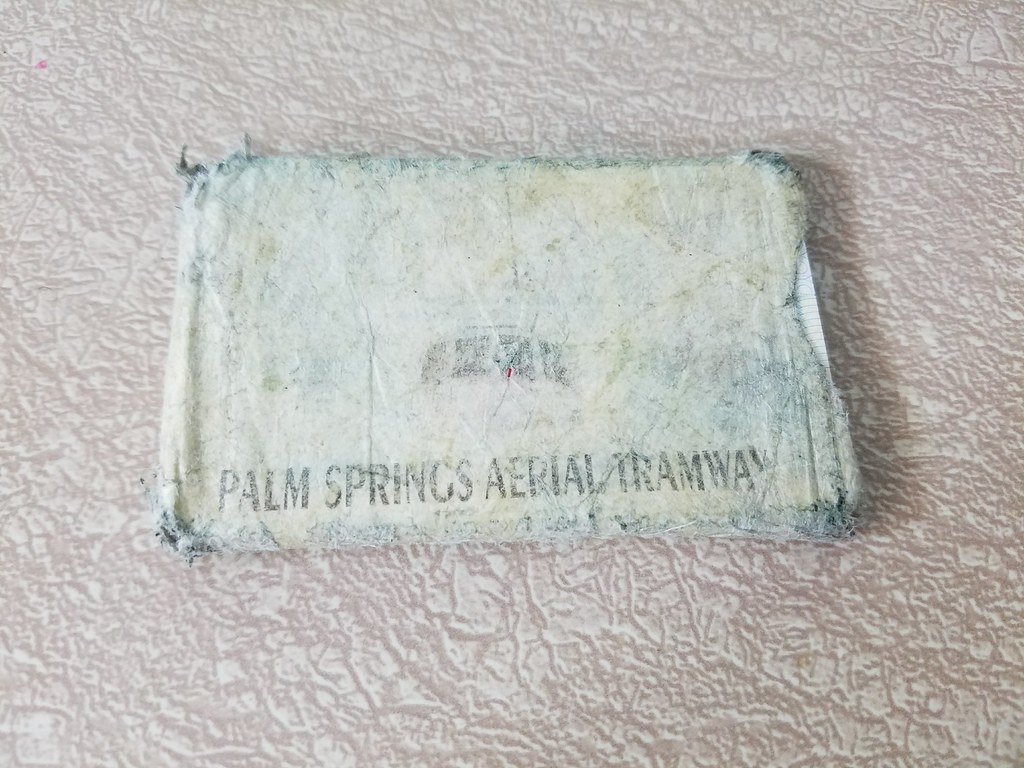 |
| January 2018 |
Yes, the logo is definitely faded and there are holes forming in the corners, but can you tell me another material that would hold up this well and be so lightweight and compact? We were at the movie theater January 2018 to see the movie 'The Post' and in the lobby they were selling wallets made of Tyvek.
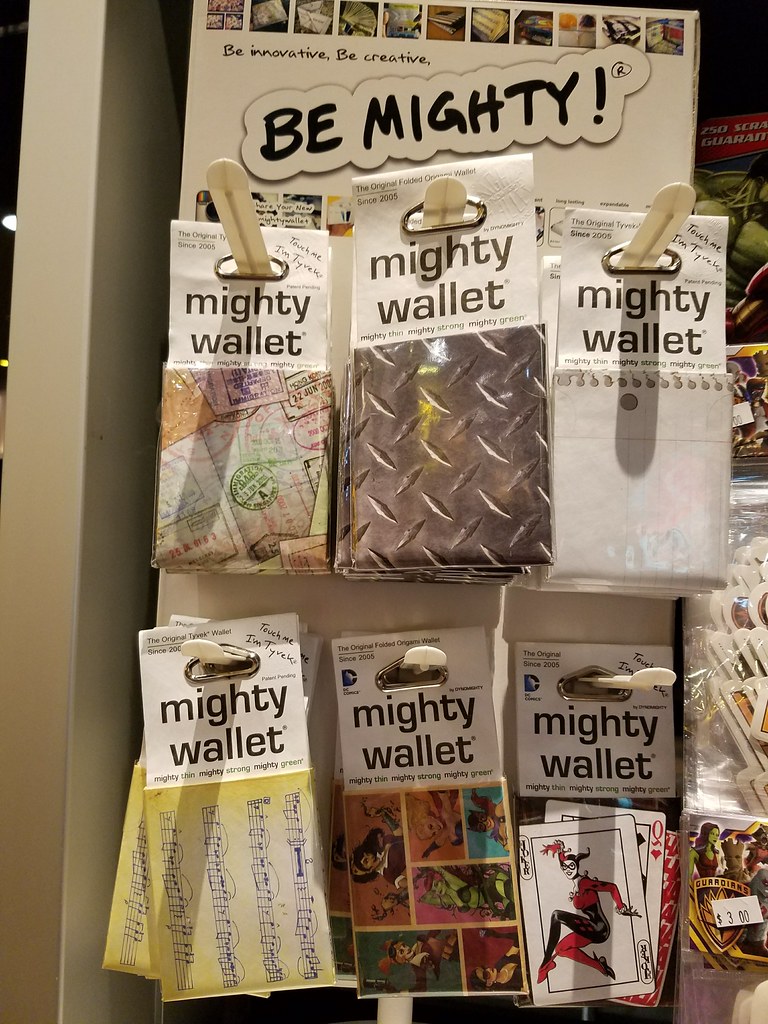 |
| January 2018 |
If you want to make your own "Mighty Wallet" out of a Tyvek envelope, the owner of DynoMighty has posted an instructable here: http://www.instructables.com/id/Express-Mail-Envelope-tyvek-Wallet/
I was so curious, as a chemist, about what kind of material would hold up so well and it turns out that it is a form of plastic. Plastic is derived from hydrocarbons (petroleum) and this type of plastic is high-density polyethylene (HDPE). This is a common plastic in the home, one major use is milk jugs.
What makes Tyvek so strong is that the long chains are not branched. The polymer is formed into thin sheets of parallel fibers. More about the manufacturing process can be seen here.
Last year, DuPont celebrated 50 years of Tyvek and it has found many uses. If you are done with the Tyvek product, you can recycle it at any location where you drop off plastic shopping bags.
If you are interested in the Summer Pass for the Palm Springs Aerial Tramway, the cost is $80 for Adults and they go on sale May 1st. You get unlimited rides up Mt. San Jacinto until Labor Day.
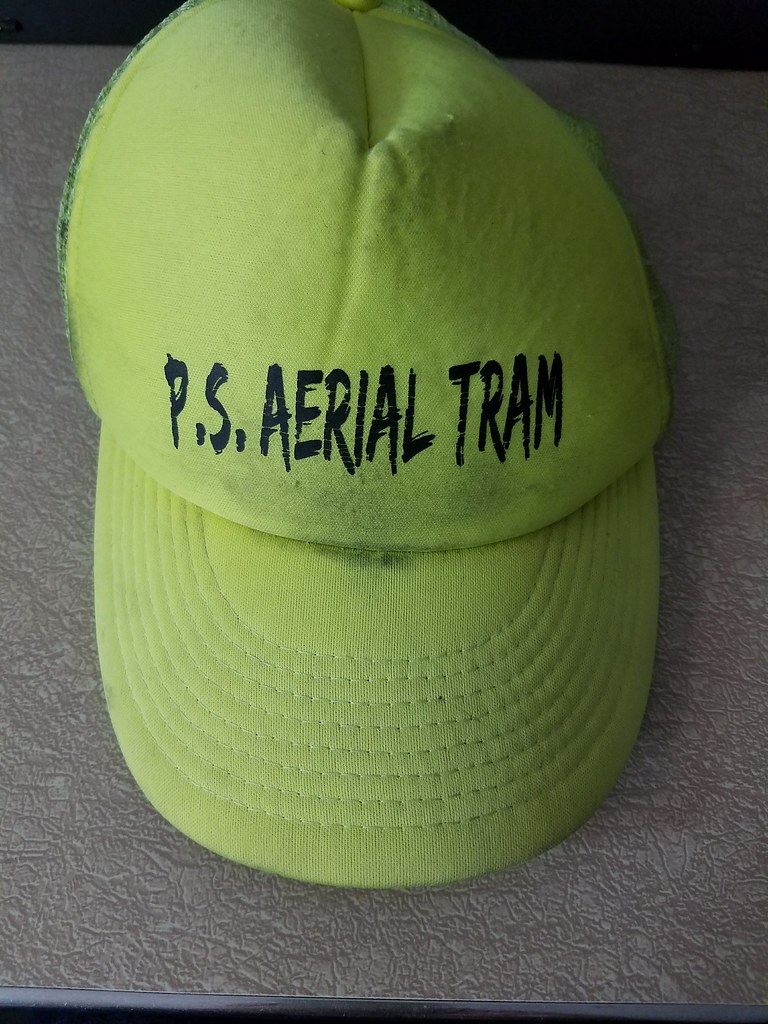 |
| January 2018 |
BTW I also bought a neon yellow "trucker hat" in summer 2013 and I still wear it almost every day. I think my mother-in-law was horrified because she offered to buy me ANY hat at the gift shop and I chose this one over all the other cute frilly girly styles.
Even though "trucker hats" are cheap, they are durable and functional. With a plastic mesh back and a large, nearly vertical foam front, this "trucker hat" keeps me cool and I love wearing it while walking or biking because I feel safer because it's "safety yellow." Look out, I'm walking here!
 |
| August 2013 |
What I love about my Tyvek wallet is that I can put it in my fanny pack and hit the roller rink, I can slide it into my sports bra and go for a run, I can fit it into my seatpost bag on my road bike, I can zip it into the side pocket of my yoga pants. It goes where I go and it's slim and durable.
Also, Tyvek is water-resistant and the plastic driver's license, credit card and insurance card inside together with the emergency $20 bill aren't harmed by a little teeny bit of perspiration. So go ahead and get your sweat on! Tyvek is a durable material that can handle whatever you are into.
Unless you're into finely dispersed iron oxide or zirconium oxide solid
superacid catalysts above 700 degrees Farhenheit, in which case your Tyvek wallet could be melted down to a wax.
Shabtai, Xiao and Zmierczak. "Depolymerization-Liquefaction of Plastics and Rubbers. 1. Polyethylene, Polypropylene, and Polybutadiene." Energy & Fuels 1997, 11, 76-87.
Tuesday, March 27, 2018
255th ACS National Meeting #ACSNOLA
The 255th ACS National Meeting in New Orleans had over 15,000 attendees. The conference theme was "Nexus of Food, Energy & Water" although most of the presentations I attended were about chemical education (CHED).
CHED 37 Diane Bunce, What makes a "C" student a "C" student? What are the differences between "A/B" students and "D/F" students? Research at the US Naval Academy (USNA) reveals that general chemistry students who get "Cs" know they should be using deep study but they haven't yet fully mastered the deep study approach. "A/B" students use deep study and "D/F" students use surface study. A second study at the USNA found that "A/B" students look at solved problems in the text (self-help, individual) while "D/F" students use peer learning facilitators (PLF) and tutors (help from other people, cooperative).
https://www.acs.org/content/acs/en/funding-and-awards/scholarships/acsscholars.html
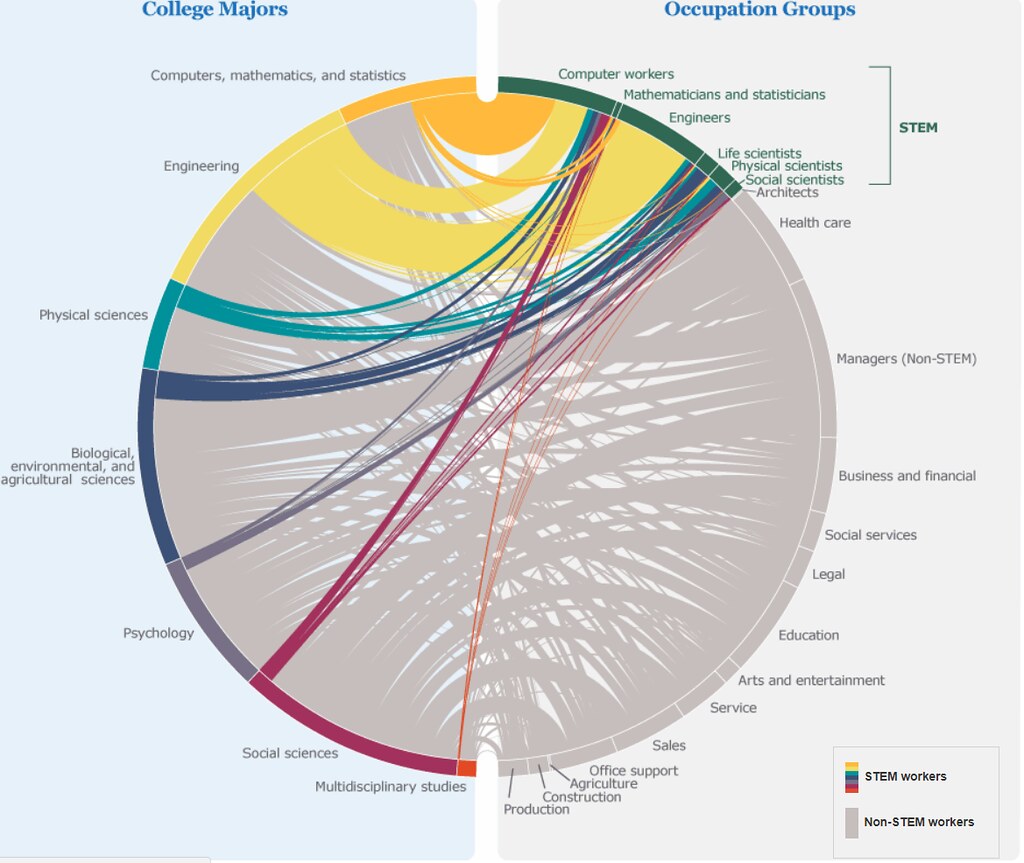 Keynote Speaker Lisa Balbes "Nontraditional Careers for Chemists: Thinking Outside the Beaker" Lisa started out by presenting some data: in one year there are 2704 PhDs awarded in but only 501 faculty positions available. There are a range of careers besides academia. Further, doing a post-doc is only useful if you are planning a career in academia. Doing a PhD in the chemical sciences teaches time management, ability to learn quickly, ability to manage a project that are transferable skills for careers outside of academia. Lisa showed a Chord, a cross between a bar chart and a flow diagram, showing the size and links between various categories. US Census data from the 2012 American Community Survey looked at which US college major subjects are commonly associated with employees in STEM jobs. The graph here shows that a minority of students who graduate with a STEM major end up working in a STEM occupation. The majority of STEM graduates end up in occupations such as management, health care, education, sales, business, legal, etc.
Keynote Speaker Lisa Balbes "Nontraditional Careers for Chemists: Thinking Outside the Beaker" Lisa started out by presenting some data: in one year there are 2704 PhDs awarded in but only 501 faculty positions available. There are a range of careers besides academia. Further, doing a post-doc is only useful if you are planning a career in academia. Doing a PhD in the chemical sciences teaches time management, ability to learn quickly, ability to manage a project that are transferable skills for careers outside of academia. Lisa showed a Chord, a cross between a bar chart and a flow diagram, showing the size and links between various categories. US Census data from the 2012 American Community Survey looked at which US college major subjects are commonly associated with employees in STEM jobs. The graph here shows that a minority of students who graduate with a STEM major end up working in a STEM occupation. The majority of STEM graduates end up in occupations such as management, health care, education, sales, business, legal, etc.
The good thing about attending the Board of Directors Meeting is that you get an overview of the conference and that can give you ideas of what you want to see. I learned about the session PRES: Science Cafes & Engaging the Public: Techniques for Hosting Successful Events. After we checked into our hotel, we came back to the convention center and I went to see
PRES 7 Science Cafes & Engaging the Public: Techniques for Hosting Successful Events by Pete Joseph Bonk, the session co-presider representing the Rhode Island ACS local section. He gave us some guidelines for planning events. (1) create a 45 minute presentation. Keep your talk on science. Tell them what we know, how well we know it, how do we know, what are the known unknowns, what are possible unknown unknowns, what are common misconceptions, what are our assumptions, are there any complications? Show humility. Avoid projections & predictions. Use unbiased sources (not news articles). Challenge your audience, don't avoid complexity. The audience has come to learn and they will trust you to inform them, you are an expert. This talk will be a basis for part (2) a large-group discussion. The total event is 2 hours, so allow for significant participation in the second part of the event. You function as a moderator, not a director, of the conversation. Above all, show your enthusiasm and have fun! Advertise your events on facebook, via email and using fliers/postcards.
PRES 8 From science cafes to a state-wide STEAM festival by Preston John and Tara A. MacDougall. In 5 years, they hosted 11 science cafes at their Discovery Center (science museum). Lessons learned: props and demos are essential, get experienced speakers, coach your speaker on what to focus on (takaways and problem solving strategies), involve the Boys & Girls club to be inclusive of diversity, use hot topics (e.g. bioengineered mosquitos to fight Zika virus), make the event two-way engagement (get volunteers to participate, do not just lecture). There is a Science Festival Alliance at MIT that can provide you training. They have a 5 year plan to create a non-profit so that the STEAM festival can become self sustaining. Currently they rely on corporate donations in $10,000 increments. The total cost of the festival exceeded $300k. With corporate partners, they can use the event to recruit the workforce of the future (e.g. Schwann cosmetic company that has trouble finding workers). Including the arts allowed for involvement of the country music hall of fame, kids made Jason Aldean style hats out of paper. Also there was a video contest with a GoPro as a prize where kids used innovative instruments to play a B# note. Video entries were tagged with #besharp
HIST 14 "Food at the Crossroads: Chemistry's Role in Sustainability, Past & Present" This is pretty much the only talk I went to that would qualify for being at the "Nexus of Food, Energy & Water" and I didn't even stay very long, but it was at least tangentially related to my passion for gardening and the experiment we do in our second analytical chemistry course about scoville heat units of a habanero.
PRES 9 "Brewing Chemistry” in Detroit: Maintaining a long running Science Café by Meghann N Murray. Her website is here. There's funding for these events here. The ACS Committee on Local Section Activities (LSAC) funds new local section projects through Local Section Innovative Projects Grants (IPGs). Application deadlines occur twice yearly: January 31 and June 30.
CHED 240 Nawaporn Sanguantrakun from St. Louis College of Pharmacy measured the effects of active learning and flipped classroom on the success of students enrolled in a two year integrated chemistry sequence. She used POGIL and PollEv to create the active classroom environment. A set of 3 cups was used to indicate whether a group was (Green) no problem, in progress (Red) stuck, need help or (Gold) finished, ready to move on. This is how she managed the dynamic classroom environment with a large enrollment. She provided students a team checklist to manage behavior and to allow students to evaluate their teammates (turn around, participate, focus, etc.). She also found that assigning team roles formally, as suggested by Moog, was better. There were team presentations for share-out. A reflection sheet was also used and collected for points. Her grading scheme overall was 60% cumulative exam, 25% midterms, 10% in class activity (3% quiz, 4% POGIL, 3% PollEv), and 5% outside class activity (supplemental instruction, office hours, review session). Her in-class lectures were 5-10 minutes long and interactive (or maybe that was the outside class video, IDK).
CHED 242 Monica Illies from Drexel University spoke about assigning a "Study Buddy" to students in her general chemistry (freshmen) and introduction to medicinal chemistry (seniors). She found via survey that her students were not valuing employer-desired skills such as teamwork. Her "pedagogic composite strategy" involved (1) think-pair-share (2) metacognition (3) feedback. She used flipped classroom, muddiest point, clickers, tie-ins to content from her students' concurrently enrolled courses, awarding participation points, and handwritten feedback. She teaches the "Study Cycle" as recommended by Saundra McGuire. She found that her freshmen were focused on reproducing/imitating the professor, they were motivated by GPA, and they considered feedback as criticism. By contrast her seniors were focused on being original, they were motivated by career readiness, and they perceived feedback as help. A big take-home point for me was that teamwork helped students avoid "the illusion of knowing" that can be associated with studying from a book.
CHED 244 Kalyn Shea Owens, a chemist, together with Ann Murkowski, a biologist, from North Seattle College have developed a set of interdisciplinary investigations (IDIs) with funding from NSF DUE. Three examples of projects involve (1) aquaporin for water purification (2) epigenetics to teach hybridization (3) hemoglobin to teach thermodynamics. These projects engage biology, engineering and public health majors. The model they follow is: connect --> extend --> challenge. The IDIs involve students reading primary literature and collaboration. The first week students generate a drawing (model) and teachers give a mini lecture. The second week students give seminars. They tell students "Your model does not need to be correct, just well supported!" A rubric instructs that students' model should utilize 2+ disciplines and communicate clearly. They discussed threshold concepts in biochemistry. Specifically intermolecular forces.
CHED 319 Charlie Cox from Stanford University uses active learning in his TA training workshop. Stanford has 40-50 incoming graduate students to train, so they match 5 trainees with 1 experienced TA. Three days (8h/day) prior to the start of the semester are used (1) policy = honor code, sexual harassment (2) safety = manifolds, ppe, spills, fires (3) teaching = office hours, problem solving, microteach, prelab lecture. Day 3 format is that new grad students give their microteach, receive feedback, eat lunch, then present an improved version of their microteach. The TA training itself uses clickers and discussions to avoid "death by powerpoint." They pay experienced TAs $500 to facilitate. The Mentors in Teaching (MinT) program extends the 3 day training into a semester (1) goal setting (2) midquarter evals (3) observation (4) end of quarter wrap up. The overall goal is to create a welcoming environment, NOT a scary experience. Presiding over this session was Rebecca Kissling, the chemistry undergraduate advisor at Binghamton University, SUNY.
CHED 290 David Cartrette from South Dakota State University spoke in the session titled "ACS Award for Achievement in Research for Teaching & Learning of Chemistry" discussing a course developed jointly with an art teacher. He followed STEMtoSTEAM.org from Rhode Island School of Design. Scientists with creative hobbies (such as music, literature, art) are 1.7x more likely to be members of the National Academy of Sciences, 1.8x more likely to be members of the Royal Society, and 2.8x more likely to be Nobel laureates. The course they developed had a 400-level designation and enrollment with half art students and half chemistry & biochemistry majors. It was populated with first-semester freshmen (FTF). It came with an honors designation. First, they deconstructed stereotypes of artists and scientists, encouraged students to focus on their common creative process (concept, trial & error, problem-solving, discovery, final approach). They presented students with an image and used Visual Thinking Strategies (VTS) as a framework to discuss that art can mean something different to each individual (see and discuss). Students were tasked with creating a public installation which required them to think: Who is the audience? How many people pass by? What is an appropriate scale? They settled on a kinetic sculpture in the student union.
CHED 330 Jack Eichler from University of California, Riverside used Active and Blended LEarning (ABLE) in general chemistry funded by NSF IUSE. A publication from The Coalition for Reform of Undergraduate STEM Education motivated his use of flipped classroom. A concept inventory revealed that peer instruction improves student performance. Best Practices for Flipped Classroom include (1) online pre-class videos with interactive questions (2) online pre-class simulations that are interactive. These must be mandatory! (aka. worth points). Then (3) the class time should be used for problem-based learning involving case-inspired real-world issues such as sustainability and renewable fuels. Eichler combined studio-produced videos with screencapture using the playpauseit software. For simulations, he used mathematicaCDF, Norton ChemTours, and PhET sims. A quiz through the learning management system (LMS) is an effective way to gauge student progress. Worksheets with open-ended questions were graded and returned. Eichler had undergraduate SI leaders and graduate TAs attend lecture. He lowered the DFW rate from 15% to 5%. He also used ALEKS for homework. Using a responsive approach, flipped classrooms together with collaborative discussion was found to be better than collaborative discussion alone.
CHED 331 Overtoun Jenda led the "Making to Advance Knowledge, Excellence and Recognition in STEM (MAKERS)" program in Alabama, which was an alliance between community colleges and universities. The goals of this program are to improve the graduation rate, lower the DFW rate, and get more people in the pipeline for STEM careers. Freshman-sophomore pairings focused on time management, study skills and academic resources. Junior-senior pairings focused on summer internships, GRE preparation, choosing a graduate school and writing. The program components that were deemed mandatory were: check your school email, attend all meetings, maintain a 3.0 GPA and full-time student status, attend workshops and summer programs. The issues were that obtaining an IRB for a multi-institution project was an absolute nightmare. NSF funding is great but you can't start the project without the IRB. His advice: choose faculty who love working with students, not just those who love getting grant money. It was hard to recruit students due to fluidity of community college population.
CHED 293 Amy Phelps from Middle Tennessee described the differences between wet labs and virtual labs. She found that in a wet lab, students talked about the procedure (and complained about missing and broken equipment) whereas in virtual lab students discussed the concepts and theory. **If students in CHEM 102 @ CSUN work in pairs for the VLabs, they may work better** Students who did the virtual lab tended to learn the micro and symbolic aspects better, whereas students who did the wet lab learned the macro aspects better. So it seems they are both good because students who did the virtual lab didn't learn the macro aspect and students who did the wet lab could not articulate symbolic or micro level understanding.
CHED 333 Sunghee Lee from Iona College in New Rochelle, New York described the "Development of Excellence in Science through Intervention, Resilience and Enrichment (DESIRE)" which funds 6 students per year (summer stipend + tuition/fees) for 4 years. The 5 pillars of their program are Academic (peer learning), Professional (REU, industry partner, career seminars, networking, field trips), Interpersonal (learning community), Intrapersonal (reflections on service learning, academic advising, career counseling: what do YOU want? not your parents'), Intercultural (understand, honor, value, resilience, apply a cultural perspective to solving problems in diverse teams). They offer a class called "Science Society & Self" SOC490 that is an elective for the sociology major and a core elective for the college of science & math. It is offered every spring and recommended for all science majors. She gave lots of detail about the assignments for this class (see image at left).
CHED 334 Marion A Franks from Virginia Tech spoke about his "Emporium" style general chemistry course. The shift in pedagogy was due to the fact that 89% of students were scoring below 40% on the ACS gen chem exam and only 3% of the students scored above the 50% benchmark. The emporium is a staffed 24h/day computer lab for students to use ALEKS. They found a decrease in DFW rate, an increase in the number of ALEKS topics mastered, and an increase on the score on the ACS exam. The peer tutors working in the emporium attend lecture and work through ALEKS. The emporium group had 2 lectures per week and 2 class meetings in the emporium whereas the control group had 3 lectures per week and a traditional recitation.
Sunday, March 18, 2018
CHED 37 Diane Bunce, What makes a "C" student a "C" student? What are the differences between "A/B" students and "D/F" students? Research at the US Naval Academy (USNA) reveals that general chemistry students who get "Cs" know they should be using deep study but they haven't yet fully mastered the deep study approach. "A/B" students use deep study and "D/F" students use surface study. A second study at the USNA found that "A/B" students look at solved problems in the text (self-help, individual) while "D/F" students use peer learning facilitators (PLF) and tutors (help from other people, cooperative).
ACS Board of Directors Meeting There is an ACS Scholars Program which awards renewable scholarships to underrepresented minority (URM) students majoring in undergraduate chemistry-related disciplines, and are also intending to pursue careers in chemistry-related fields. Selected recipients are awarded up to $5,000* per academic year. To date, over 3,000 students have received a funding from the ACS Scholars Program.#ACSNOLA Nontraditional Careers for Scientists: thinking outside the beaker by Lisa M. Balbes #scicomm pic.twitter.com/9gnrfVyGHC— CSUN ChemClub (@CSUNchemclub) March 18, 2018
https://www.acs.org/content/acs/en/funding-and-awards/scholarships/acsscholars.html
 Keynote Speaker Lisa Balbes "Nontraditional Careers for Chemists: Thinking Outside the Beaker" Lisa started out by presenting some data: in one year there are 2704 PhDs awarded in but only 501 faculty positions available. There are a range of careers besides academia. Further, doing a post-doc is only useful if you are planning a career in academia. Doing a PhD in the chemical sciences teaches time management, ability to learn quickly, ability to manage a project that are transferable skills for careers outside of academia. Lisa showed a Chord, a cross between a bar chart and a flow diagram, showing the size and links between various categories. US Census data from the 2012 American Community Survey looked at which US college major subjects are commonly associated with employees in STEM jobs. The graph here shows that a minority of students who graduate with a STEM major end up working in a STEM occupation. The majority of STEM graduates end up in occupations such as management, health care, education, sales, business, legal, etc.
Keynote Speaker Lisa Balbes "Nontraditional Careers for Chemists: Thinking Outside the Beaker" Lisa started out by presenting some data: in one year there are 2704 PhDs awarded in but only 501 faculty positions available. There are a range of careers besides academia. Further, doing a post-doc is only useful if you are planning a career in academia. Doing a PhD in the chemical sciences teaches time management, ability to learn quickly, ability to manage a project that are transferable skills for careers outside of academia. Lisa showed a Chord, a cross between a bar chart and a flow diagram, showing the size and links between various categories. US Census data from the 2012 American Community Survey looked at which US college major subjects are commonly associated with employees in STEM jobs. The graph here shows that a minority of students who graduate with a STEM major end up working in a STEM occupation. The majority of STEM graduates end up in occupations such as management, health care, education, sales, business, legal, etc.The good thing about attending the Board of Directors Meeting is that you get an overview of the conference and that can give you ideas of what you want to see. I learned about the session PRES: Science Cafes & Engaging the Public: Techniques for Hosting Successful Events. After we checked into our hotel, we came back to the convention center and I went to see
PRES 7 Science Cafes & Engaging the Public: Techniques for Hosting Successful Events by Pete Joseph Bonk, the session co-presider representing the Rhode Island ACS local section. He gave us some guidelines for planning events. (1) create a 45 minute presentation. Keep your talk on science. Tell them what we know, how well we know it, how do we know, what are the known unknowns, what are possible unknown unknowns, what are common misconceptions, what are our assumptions, are there any complications? Show humility. Avoid projections & predictions. Use unbiased sources (not news articles). Challenge your audience, don't avoid complexity. The audience has come to learn and they will trust you to inform them, you are an expert. This talk will be a basis for part (2) a large-group discussion. The total event is 2 hours, so allow for significant participation in the second part of the event. You function as a moderator, not a director, of the conversation. Above all, show your enthusiasm and have fun! Advertise your events on facebook, via email and using fliers/postcards.
PRES 8 From science cafes to a state-wide STEAM festival by Preston John and Tara A. MacDougall. In 5 years, they hosted 11 science cafes at their Discovery Center (science museum). Lessons learned: props and demos are essential, get experienced speakers, coach your speaker on what to focus on (takaways and problem solving strategies), involve the Boys & Girls club to be inclusive of diversity, use hot topics (e.g. bioengineered mosquitos to fight Zika virus), make the event two-way engagement (get volunteers to participate, do not just lecture). There is a Science Festival Alliance at MIT that can provide you training. They have a 5 year plan to create a non-profit so that the STEAM festival can become self sustaining. Currently they rely on corporate donations in $10,000 increments. The total cost of the festival exceeded $300k. With corporate partners, they can use the event to recruit the workforce of the future (e.g. Schwann cosmetic company that has trouble finding workers). Including the arts allowed for involvement of the country music hall of fame, kids made Jason Aldean style hats out of paper. Also there was a video contest with a GoPro as a prize where kids used innovative instruments to play a B# note. Video entries were tagged with #besharp
HIST 14 "Food at the Crossroads: Chemistry's Role in Sustainability, Past & Present" This is pretty much the only talk I went to that would qualify for being at the "Nexus of Food, Energy & Water" and I didn't even stay very long, but it was at least tangentially related to my passion for gardening and the experiment we do in our second analytical chemistry course about scoville heat units of a habanero.
Senior editor @cenmag Rick Mullin sharing #HIST chemical/botanical history of chili peppers #ACSNOLA https://t.co/O4tYnuxsjn Wilbur Scoville taste scale from 0 to 16M— Kayla A. Kaiser (@hamerk02) March 18, 2018
PRES 9 "Brewing Chemistry” in Detroit: Maintaining a long running Science Café by Meghann N Murray. Her website is here. There's funding for these events here. The ACS Committee on Local Section Activities (LSAC) funds new local section projects through Local Section Innovative Projects Grants (IPGs). Application deadlines occur twice yearly: January 31 and June 30.
At my poster (CHED 160) I got to catch up with my BFF Cheri (Barta) Rossi.
CHED 237 Amanda Holton from UC Irvine presented her work on active learning in massive lecture courses. I met her last year at the Collaborative Chemistry Conference in Oxnard, CA.
Monday, March 19, 2018
CHED 237 Amanda Holton from UC Irvine presented her work on active learning in massive lecture courses. I met her last year at the Collaborative Chemistry Conference in Oxnard, CA.
CHED 253 Justin Carmel at Florida International University studied students' ability to (1) engage arguments from evidence (2) plan and do experiments (3) analyze and interpret data and (4) construct explanations. Students were given two graphs, see below, and asked "What if anything can you say about this data? Can you make a conclusion?" He found that students agreed that the left graph was inconclusive, but that students tended to make a conclusion from the graph on the right.
He also had some cool assessment based on Rhodamine. He showed students a UV-Vis absorbance spectrum and asked them "Based on this analysis, do you believe it? What are the similarities and differences? What would the solution look like based on the absorbance spectrum?" A third activity was based on Phlogiston theory. Data was presented to students (burning magnesium, forming magnesium oxide) and students were asked to explain their reasoning using Phlogiston theory (or not).
CHED 254 Dulani Samarasekara from Mississippi State University presented data evaluating designed laboratory partnerships. Her groups were (A) free choice (B) random (C) side to side (D) high-low and (E) cohort. The side-to-side partnerships were where the ACT math score was similar between partners and the high-low partnerships were where one person in the group had a higher ACT math score than the other. The model inputs were post-lab critical thinking questions, survey attitudes, and lecture course final exam grade. Groups (4) and (5) had the highest cooperation based on survey data, while group (4) had the highest average final exam score. This is two semesters worth of on-sequence general chemistry (FA12 and FA13) with N = 1400ish. Group (4) enjoyed the partnerships the most. Future work will examine the effect of gender and ethnicity. The audience member asked if she conducted any face-to-face interviews.
CHED 240 Nawaporn Sanguantrakun from St. Louis College of Pharmacy measured the effects of active learning and flipped classroom on the success of students enrolled in a two year integrated chemistry sequence. She used POGIL and PollEv to create the active classroom environment. A set of 3 cups was used to indicate whether a group was (Green) no problem, in progress (Red) stuck, need help or (Gold) finished, ready to move on. This is how she managed the dynamic classroom environment with a large enrollment. She provided students a team checklist to manage behavior and to allow students to evaluate their teammates (turn around, participate, focus, etc.). She also found that assigning team roles formally, as suggested by Moog, was better. There were team presentations for share-out. A reflection sheet was also used and collected for points. Her grading scheme overall was 60% cumulative exam, 25% midterms, 10% in class activity (3% quiz, 4% POGIL, 3% PollEv), and 5% outside class activity (supplemental instruction, office hours, review session). Her in-class lectures were 5-10 minutes long and interactive (or maybe that was the outside class video, IDK).
CHED 242 Monica Illies from Drexel University spoke about assigning a "Study Buddy" to students in her general chemistry (freshmen) and introduction to medicinal chemistry (seniors). She found via survey that her students were not valuing employer-desired skills such as teamwork. Her "pedagogic composite strategy" involved (1) think-pair-share (2) metacognition (3) feedback. She used flipped classroom, muddiest point, clickers, tie-ins to content from her students' concurrently enrolled courses, awarding participation points, and handwritten feedback. She teaches the "Study Cycle" as recommended by Saundra McGuire. She found that her freshmen were focused on reproducing/imitating the professor, they were motivated by GPA, and they considered feedback as criticism. By contrast her seniors were focused on being original, they were motivated by career readiness, and they perceived feedback as help. A big take-home point for me was that teamwork helped students avoid "the illusion of knowing" that can be associated with studying from a book.
CHED 244 Kalyn Shea Owens, a chemist, together with Ann Murkowski, a biologist, from North Seattle College have developed a set of interdisciplinary investigations (IDIs) with funding from NSF DUE. Three examples of projects involve (1) aquaporin for water purification (2) epigenetics to teach hybridization (3) hemoglobin to teach thermodynamics. These projects engage biology, engineering and public health majors. The model they follow is: connect --> extend --> challenge. The IDIs involve students reading primary literature and collaboration. The first week students generate a drawing (model) and teachers give a mini lecture. The second week students give seminars. They tell students "Your model does not need to be correct, just well supported!" A rubric instructs that students' model should utilize 2+ disciplines and communicate clearly. They discussed threshold concepts in biochemistry. Specifically intermolecular forces.
CHED 319 Charlie Cox from Stanford University uses active learning in his TA training workshop. Stanford has 40-50 incoming graduate students to train, so they match 5 trainees with 1 experienced TA. Three days (8h/day) prior to the start of the semester are used (1) policy = honor code, sexual harassment (2) safety = manifolds, ppe, spills, fires (3) teaching = office hours, problem solving, microteach, prelab lecture. Day 3 format is that new grad students give their microteach, receive feedback, eat lunch, then present an improved version of their microteach. The TA training itself uses clickers and discussions to avoid "death by powerpoint." They pay experienced TAs $500 to facilitate. The Mentors in Teaching (MinT) program extends the 3 day training into a semester (1) goal setting (2) midquarter evals (3) observation (4) end of quarter wrap up. The overall goal is to create a welcoming environment, NOT a scary experience. Presiding over this session was Rebecca Kissling, the chemistry undergraduate advisor at Binghamton University, SUNY.
CHED 290 David Cartrette from South Dakota State University spoke in the session titled "ACS Award for Achievement in Research for Teaching & Learning of Chemistry" discussing a course developed jointly with an art teacher. He followed STEMtoSTEAM.org from Rhode Island School of Design. Scientists with creative hobbies (such as music, literature, art) are 1.7x more likely to be members of the National Academy of Sciences, 1.8x more likely to be members of the Royal Society, and 2.8x more likely to be Nobel laureates. The course they developed had a 400-level designation and enrollment with half art students and half chemistry & biochemistry majors. It was populated with first-semester freshmen (FTF). It came with an honors designation. First, they deconstructed stereotypes of artists and scientists, encouraged students to focus on their common creative process (concept, trial & error, problem-solving, discovery, final approach). They presented students with an image and used Visual Thinking Strategies (VTS) as a framework to discuss that art can mean something different to each individual (see and discuss). Students were tasked with creating a public installation which required them to think: Who is the audience? How many people pass by? What is an appropriate scale? They settled on a kinetic sculpture in the student union.
CHED 330 Jack Eichler from University of California, Riverside used Active and Blended LEarning (ABLE) in general chemistry funded by NSF IUSE. A publication from The Coalition for Reform of Undergraduate STEM Education motivated his use of flipped classroom. A concept inventory revealed that peer instruction improves student performance. Best Practices for Flipped Classroom include (1) online pre-class videos with interactive questions (2) online pre-class simulations that are interactive. These must be mandatory! (aka. worth points). Then (3) the class time should be used for problem-based learning involving case-inspired real-world issues such as sustainability and renewable fuels. Eichler combined studio-produced videos with screencapture using the playpauseit software. For simulations, he used mathematicaCDF, Norton ChemTours, and PhET sims. A quiz through the learning management system (LMS) is an effective way to gauge student progress. Worksheets with open-ended questions were graded and returned. Eichler had undergraduate SI leaders and graduate TAs attend lecture. He lowered the DFW rate from 15% to 5%. He also used ALEKS for homework. Using a responsive approach, flipped classrooms together with collaborative discussion was found to be better than collaborative discussion alone.
CHED 331 Overtoun Jenda led the "Making to Advance Knowledge, Excellence and Recognition in STEM (MAKERS)" program in Alabama, which was an alliance between community colleges and universities. The goals of this program are to improve the graduation rate, lower the DFW rate, and get more people in the pipeline for STEM careers. Freshman-sophomore pairings focused on time management, study skills and academic resources. Junior-senior pairings focused on summer internships, GRE preparation, choosing a graduate school and writing. The program components that were deemed mandatory were: check your school email, attend all meetings, maintain a 3.0 GPA and full-time student status, attend workshops and summer programs. The issues were that obtaining an IRB for a multi-institution project was an absolute nightmare. NSF funding is great but you can't start the project without the IRB. His advice: choose faculty who love working with students, not just those who love getting grant money. It was hard to recruit students due to fluidity of community college population.
CHED 293 Amy Phelps from Middle Tennessee described the differences between wet labs and virtual labs. She found that in a wet lab, students talked about the procedure (and complained about missing and broken equipment) whereas in virtual lab students discussed the concepts and theory. **If students in CHEM 102 @ CSUN work in pairs for the VLabs, they may work better** Students who did the virtual lab tended to learn the micro and symbolic aspects better, whereas students who did the wet lab learned the macro aspects better. So it seems they are both good because students who did the virtual lab didn't learn the macro aspect and students who did the wet lab could not articulate symbolic or micro level understanding.
CHED 333 Sunghee Lee from Iona College in New Rochelle, New York described the "Development of Excellence in Science through Intervention, Resilience and Enrichment (DESIRE)" which funds 6 students per year (summer stipend + tuition/fees) for 4 years. The 5 pillars of their program are Academic (peer learning), Professional (REU, industry partner, career seminars, networking, field trips), Interpersonal (learning community), Intrapersonal (reflections on service learning, academic advising, career counseling: what do YOU want? not your parents'), Intercultural (understand, honor, value, resilience, apply a cultural perspective to solving problems in diverse teams). They offer a class called "Science Society & Self" SOC490 that is an elective for the sociology major and a core elective for the college of science & math. It is offered every spring and recommended for all science majors. She gave lots of detail about the assignments for this class (see image at left).
CHED 334 Marion A Franks from Virginia Tech spoke about his "Emporium" style general chemistry course. The shift in pedagogy was due to the fact that 89% of students were scoring below 40% on the ACS gen chem exam and only 3% of the students scored above the 50% benchmark. The emporium is a staffed 24h/day computer lab for students to use ALEKS. They found a decrease in DFW rate, an increase in the number of ALEKS topics mastered, and an increase on the score on the ACS exam. The peer tutors working in the emporium attend lecture and work through ALEKS. The emporium group had 2 lectures per week and 2 class meetings in the emporium whereas the control group had 3 lectures per week and a traditional recitation.
| test | control | test | control | test | control | ||
| 52 | 71 | 65 | 20 | 47 | 40 | ||
| 47 | 54 | 70 | 65 | 60 | 57 | ||
| 36 | 62 | 75 | 58 | 41 | 36 | ||
| DFW | rate | ALEKS | topics | ACS | Exam |
CHED 1796-1800 "STRETCH your students' minds using materials to engineer ideas about water, food and energy in the chemistry classroom," a make-and-take session.
CHED 1870 "Pasadena City College (PCC) Chemistry Club" saw Veronica Jaramillo and had a great coffee talk with her the next day.
Mississippi State Alumni and Friends Reception at Mulate's the original Cajun restaurant. Found out that they are hiring 5 faculty without any restrictions on the discipline. A great place to solve a "two-body problem."
CHED 1929 Lance Shipman Young at Morehouse College spoke about Peer-Lead Team Learning (PLTL) and his conclusions were that you need (1) an "Army of the Committed" so that if some faculty or administrators leave the program will survive (2) creative funding sources, they get $12,000 per year in donation from Corning (3) and willing open-minded faculty and deans. At his school, the program actually went on a 2-3 year hiatus due to a lack of these three items, but it's revived now.
CHED 1930 Rick Moog spoke about POGIL, PLTL and Pratibha. In a talk from 2005 they were using student-centered pedagogic approaches including process-oriented guided inquiry learning (POGIL) and peer-led guided inquiry (PGLI), physical chemistry online (PCOL), problem-based learning (PBL), calibrated peer review (CPR), and just in time teaching (JITT) so these ideas are hardly new.
CHED 1940 Allison Caster from Colorado School of Mines spoke about how and why she converted general chemistry in large traditional lecture sections (250 students) to smaller class size (50 students) with active learning. Using a pre- and post-test in the traditional lecture revealed that students were coming out of the class with misconceptions and poor mastery of the material. Also, there was a 20% DFW rate. The 4 Pillars that support their work are (1) learning by doing (2) finding relevance (3) communicating (4) scaffolding = start with what they know. They noted that it can be overwhelming to implement active learning given the array of techniques in the literature. Leading students to an impasse is critical. They used whiteboards and authored (or borrowed) 60+ activities. They used the science writing heuristic (SWH). There are lots of resources here. With a class size of 263 students they were able to lower the DFW from 25% to 15%. They saw a bump in attendance from 70% to 95% even though the worksheets were worth a small amount of points. Students recognized that attending class was of value. They did intentional grouping and also allowed groups to reshuffle throughout the semester.
CHED 1941 Kimberly Linenberger Cortes from Kennesaw State University in Georgia spoke about her Fall 2016 Science & Math majors cohort. The students took chem lecture and lab as well as math class and freshman seminar together. She used GoFormative and iClicker for daily group quizzes (analogous to learning catalytics). POGIL and ChemSource were the resources for in-class activities. ChemQuest and PhET were used for simulations. Camtasia was used for flipping the classroom, with embedded quizzes in the videos. The barriers to implementation were: PLTL facilitators and rooms. Also, it was difficult to get faculty to adopt high-tech video production. Her framework was Model-Based Inquiry (MBI) which (1) anchors (2) presents initial ideas (3) engages students in an activity (4) revisits hypothesis. The activities intentionally created cognitive dissonance. Labs were paired with simulations. The learning community was found to decrease the DFW rate. The flipped classroom environment was appreciated by freshmen but a more difficult adjustment for nontraditional students. Examples of her activities were flame tests, legos for dilution, and a FlinnSci activity on paramagnetism.
CHED 1943 Scott Lewis at the University of South Florida spoke about flipped classroom and PLTL in the second semester of general chemistry. He used measurable linked content (MLC). He created 47 instructional videos together with a team of 3 people. They have an upper level chemistry course that is PLTL training. Using class-level data over 8 sections, he found that the following deviations from the mean:
The advantages to his approach is that it is scalable, covers the same content and presents a minimal cost to students. His future work involves longitudinal tracking of his former students and PLTL facilitators in analytical chemistry.
A post shared by Kayla Kaiser (@hamerk02) on
CHED 1870 "Pasadena City College (PCC) Chemistry Club" saw Veronica Jaramillo and had a great coffee talk with her the next day.
Mississippi State Alumni and Friends Reception at Mulate's the original Cajun restaurant. Found out that they are hiring 5 faculty without any restrictions on the discipline. A great place to solve a "two-body problem."
Tuesday, March 20, 2018
CHED 1929 Lance Shipman Young at Morehouse College spoke about Peer-Lead Team Learning (PLTL) and his conclusions were that you need (1) an "Army of the Committed" so that if some faculty or administrators leave the program will survive (2) creative funding sources, they get $12,000 per year in donation from Corning (3) and willing open-minded faculty and deans. At his school, the program actually went on a 2-3 year hiatus due to a lack of these three items, but it's revived now.
CHED 1930 Rick Moog spoke about POGIL, PLTL and Pratibha. In a talk from 2005 they were using student-centered pedagogic approaches including process-oriented guided inquiry learning (POGIL) and peer-led guided inquiry (PGLI), physical chemistry online (PCOL), problem-based learning (PBL), calibrated peer review (CPR), and just in time teaching (JITT) so these ideas are hardly new.
CHED 1940 Allison Caster from Colorado School of Mines spoke about how and why she converted general chemistry in large traditional lecture sections (250 students) to smaller class size (50 students) with active learning. Using a pre- and post-test in the traditional lecture revealed that students were coming out of the class with misconceptions and poor mastery of the material. Also, there was a 20% DFW rate. The 4 Pillars that support their work are (1) learning by doing (2) finding relevance (3) communicating (4) scaffolding = start with what they know. They noted that it can be overwhelming to implement active learning given the array of techniques in the literature. Leading students to an impasse is critical. They used whiteboards and authored (or borrowed) 60+ activities. They used the science writing heuristic (SWH). There are lots of resources here. With a class size of 263 students they were able to lower the DFW from 25% to 15%. They saw a bump in attendance from 70% to 95% even though the worksheets were worth a small amount of points. Students recognized that attending class was of value. They did intentional grouping and also allowed groups to reshuffle throughout the semester.
CHED 1941 Kimberly Linenberger Cortes from Kennesaw State University in Georgia spoke about her Fall 2016 Science & Math majors cohort. The students took chem lecture and lab as well as math class and freshman seminar together. She used GoFormative and iClicker for daily group quizzes (analogous to learning catalytics). POGIL and ChemSource were the resources for in-class activities. ChemQuest and PhET were used for simulations. Camtasia was used for flipping the classroom, with embedded quizzes in the videos. The barriers to implementation were: PLTL facilitators and rooms. Also, it was difficult to get faculty to adopt high-tech video production. Her framework was Model-Based Inquiry (MBI) which (1) anchors (2) presents initial ideas (3) engages students in an activity (4) revisits hypothesis. The activities intentionally created cognitive dissonance. Labs were paired with simulations. The learning community was found to decrease the DFW rate. The flipped classroom environment was appreciated by freshmen but a more difficult adjustment for nontraditional students. Examples of her activities were flame tests, legos for dilution, and a FlinnSci activity on paramagnetism.
CHED 1943 Scott Lewis at the University of South Florida spoke about flipped classroom and PLTL in the second semester of general chemistry. He used measurable linked content (MLC). He created 47 instructional videos together with a team of 3 people. They have an upper level chemistry course that is PLTL training. Using class-level data over 8 sections, he found that the following deviations from the mean:
| flipped | traditional | p value | |
| midterm | +0.25 | -0.31 | 0.003 |
| final | +0.16 | -0.18 | 0.008 |
The advantages to his approach is that it is scalable, covers the same content and presents a minimal cost to students. His future work involves longitudinal tracking of his former students and PLTL facilitators in analytical chemistry.
CHED 1944 Drew Meyer from Case Western Reserve in Ohio described several semesters worth of data where he used ALEKS, clickers and POGIL-like active learning in 40% of his lectures. Twice he also used pre-lecture videos. He had a large class (300 students) and a small class (45 students). Best practices dictate that if you plan to do active learning, you must begin on day 1. If you have a theater-style classroom, make a seating chart that leaves some rows open for you to move through the room. The pre-lecture videos get everyone on the same base of knowledge and a start-of-class quiz gets them there on time. He used Camtasia for his videos, no more than 10 minutes each. He measured students' attitudes toward chemistry.
CHED 1967 David Malik from Indianapolis University presented data on the success of ALEKS and PLTL on lowering the DFW rate from 40% to below 20%. He emphasized that remedial courses hinder student progress and decrease the graduation rate. Many students get stuck and never finish.
CHED 1968 Bobby Kunnath from Syracuse University in New York spoke about his experience with bridging high school and university. He is a high school math teacher plagued with students constantly asking why they need to learn math. He found chemistry is the perfect way to show students exactly why they need math skills. Also being an immigrant, he is sensitive to the communities of refugees from Congo, Somalia, Nepal, Burma, Yemen, Sudan, and Vietnam that can be found in New York. He reported that 80% of his students qualify for free or reduced lunch. The experience he provides for them ranges from 6 weeks to 1 year where students shadow and then do hands-on experiments to receive a $250 stipend when they turn in a reflective essay. This made me wonder: Why can't the chemistry placement test (CPT) be a part of Freshman Orientation? We already require a math and writing placement exam.
CHED 1969 Ranier Glaser from University of Missouri discussed his recent publication wherein he taught spectral deconvolution using Excel in a course about how to do science. A take-home point of his talk was that "If the essence of science is peer review, then we're not teaching science if we're not doing peer review." And also "The idea that scientists are objective is a myth. They're ego driven, especially the successful ones. Peer review constrains the egos. Arguments are necessary. Peer review is a way of communication." You can find more about this course here: Undergraduate Seminar in Chemistry (3).New Curriculum on Scientific Writing, Peer Review, Science Communication. Writing-Intensive. Methods for reading, locating and presenting chemical information; data management, presentation and analysis; scientific writing; scientific peer review; professional ethics.
CHED 2015 Emily Lauren Atieh of Rutgers University in New Jersey presented her chemistry game consisting of "Sleuth Problems." Students could choose to solve a problem by purchasing various pieces of information on a budget. Constants are free. If students get the problem correct they will gain money, if they submit an incorrect answer money is deducted from their budget. Using a Likert-scale tudents (N = 52) agree that the sleuth problems helped them self-diagnose their problem solving skills, encouraged them to work in groups, and helped them understand. The Likert-scale questions revealed that the sleuth problems did not help them prepare for the exam. Open-ended surveys also found that students were frustrated by the sleuth problems, namely where to begin. Finally, the open-ended survey uncovered that students felt the sleuth problems did not relate to the exam. Her future work will include a note in the IRB that students' solution maps will be collected as data.
CHED 2016 Nathaniel Beres and Aaron Roerdink from Heidelberg University in Ohio teach a course where students study the chemistry in art and then take an international trip to view the art. Stateside, students made paint & pigments, degraded the paint & pigments, analyzed the samples, discussed forgeries. They also studied the effects of acid, base and neutral solutions in contact with marble, brass, copper and clay (materials used to create sculptures). A key assignment prior to the trip is that students were delegated to serve as tour guides for the group at specific times in the overseas experience. While traveling, students completed a journal prompt for each day of the trip. Tours included a museum conservatory, a university with an art conservation program, and a world-renowned ceramics studio. Collaborating with the Psychology department gave these chemistry professors a "Universality-Diversity Scale" to assess if the program ended up enhancing students' world-view. A final assignment was for students to articulate when they observe an object that they would NOT consider "art" among the pieces they viewed during their trip. The cost per student was charged upfront as "fees" for the course $2500 / student. They refunded any unused portion of the money, in this case $700.
I read an article just before attending the conference about the hashtag #scicomm. A response article, which I have not fully read, was posted on a different media outlet about 24 hours later. I definitely do use social media to promote science. What are your thoughts?
CHED 1969 Ranier Glaser from University of Missouri discussed his recent publication wherein he taught spectral deconvolution using Excel in a course about how to do science. A take-home point of his talk was that "If the essence of science is peer review, then we're not teaching science if we're not doing peer review." And also "The idea that scientists are objective is a myth. They're ego driven, especially the successful ones. Peer review constrains the egos. Arguments are necessary. Peer review is a way of communication." You can find more about this course here: Undergraduate Seminar in Chemistry (3).New Curriculum on Scientific Writing, Peer Review, Science Communication. Writing-Intensive. Methods for reading, locating and presenting chemical information; data management, presentation and analysis; scientific writing; scientific peer review; professional ethics.
CHED 2015 Emily Lauren Atieh of Rutgers University in New Jersey presented her chemistry game consisting of "Sleuth Problems." Students could choose to solve a problem by purchasing various pieces of information on a budget. Constants are free. If students get the problem correct they will gain money, if they submit an incorrect answer money is deducted from their budget. Using a Likert-scale tudents (N = 52) agree that the sleuth problems helped them self-diagnose their problem solving skills, encouraged them to work in groups, and helped them understand. The Likert-scale questions revealed that the sleuth problems did not help them prepare for the exam. Open-ended surveys also found that students were frustrated by the sleuth problems, namely where to begin. Finally, the open-ended survey uncovered that students felt the sleuth problems did not relate to the exam. Her future work will include a note in the IRB that students' solution maps will be collected as data.
CHED 2016 Nathaniel Beres and Aaron Roerdink from Heidelberg University in Ohio teach a course where students study the chemistry in art and then take an international trip to view the art. Stateside, students made paint & pigments, degraded the paint & pigments, analyzed the samples, discussed forgeries. They also studied the effects of acid, base and neutral solutions in contact with marble, brass, copper and clay (materials used to create sculptures). A key assignment prior to the trip is that students were delegated to serve as tour guides for the group at specific times in the overseas experience. While traveling, students completed a journal prompt for each day of the trip. Tours included a museum conservatory, a university with an art conservation program, and a world-renowned ceramics studio. Collaborating with the Psychology department gave these chemistry professors a "Universality-Diversity Scale" to assess if the program ended up enhancing students' world-view. A final assignment was for students to articulate when they observe an object that they would NOT consider "art" among the pieces they viewed during their trip. The cost per student was charged upfront as "fees" for the course $2500 / student. They refunded any unused portion of the money, in this case $700.
I read an article just before attending the conference about the hashtag #scicomm. A response article, which I have not fully read, was posted on a different media outlet about 24 hours later. I definitely do use social media to promote science. What are your thoughts?
Subscribe to:
Posts (Atom)


